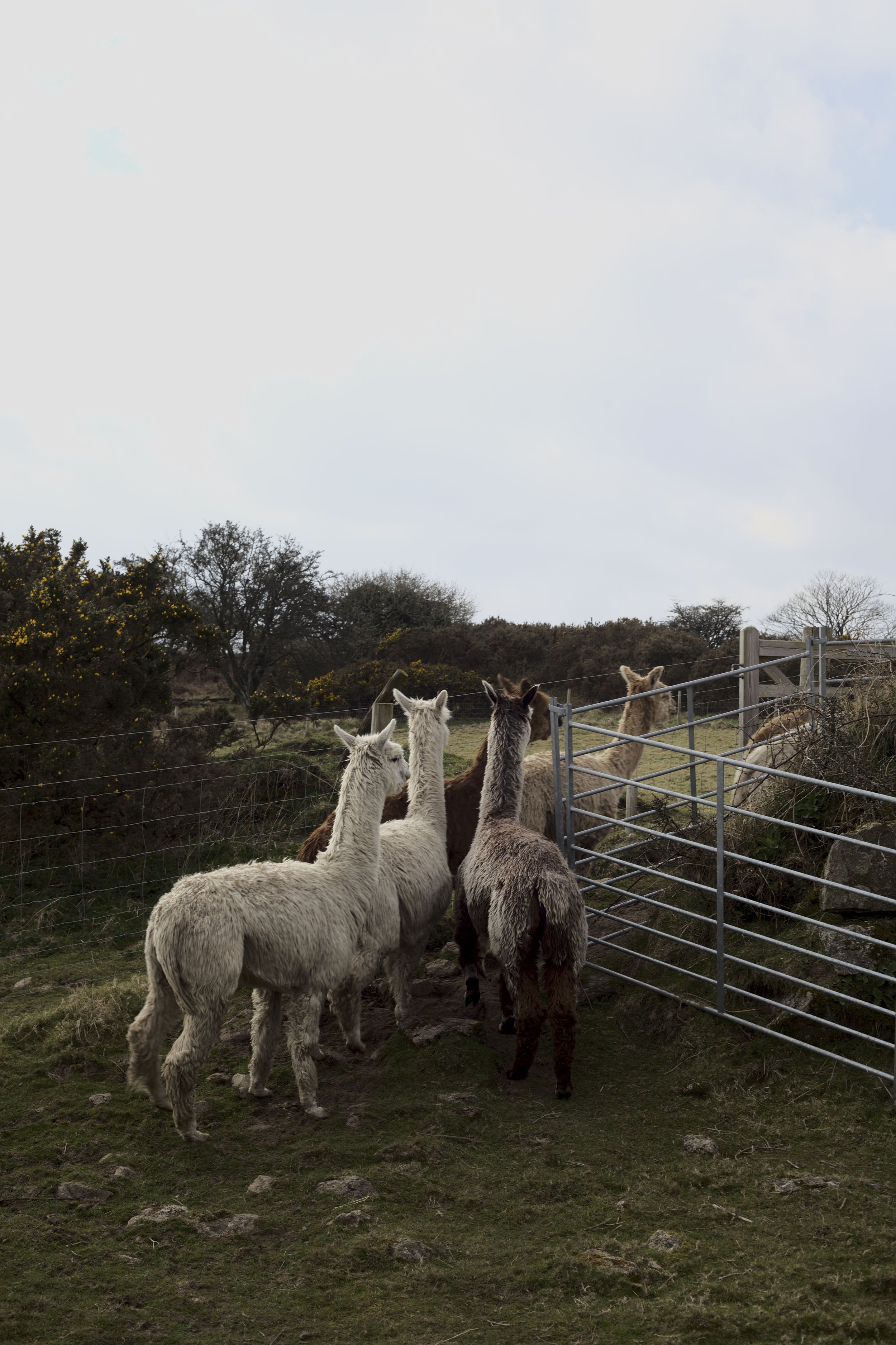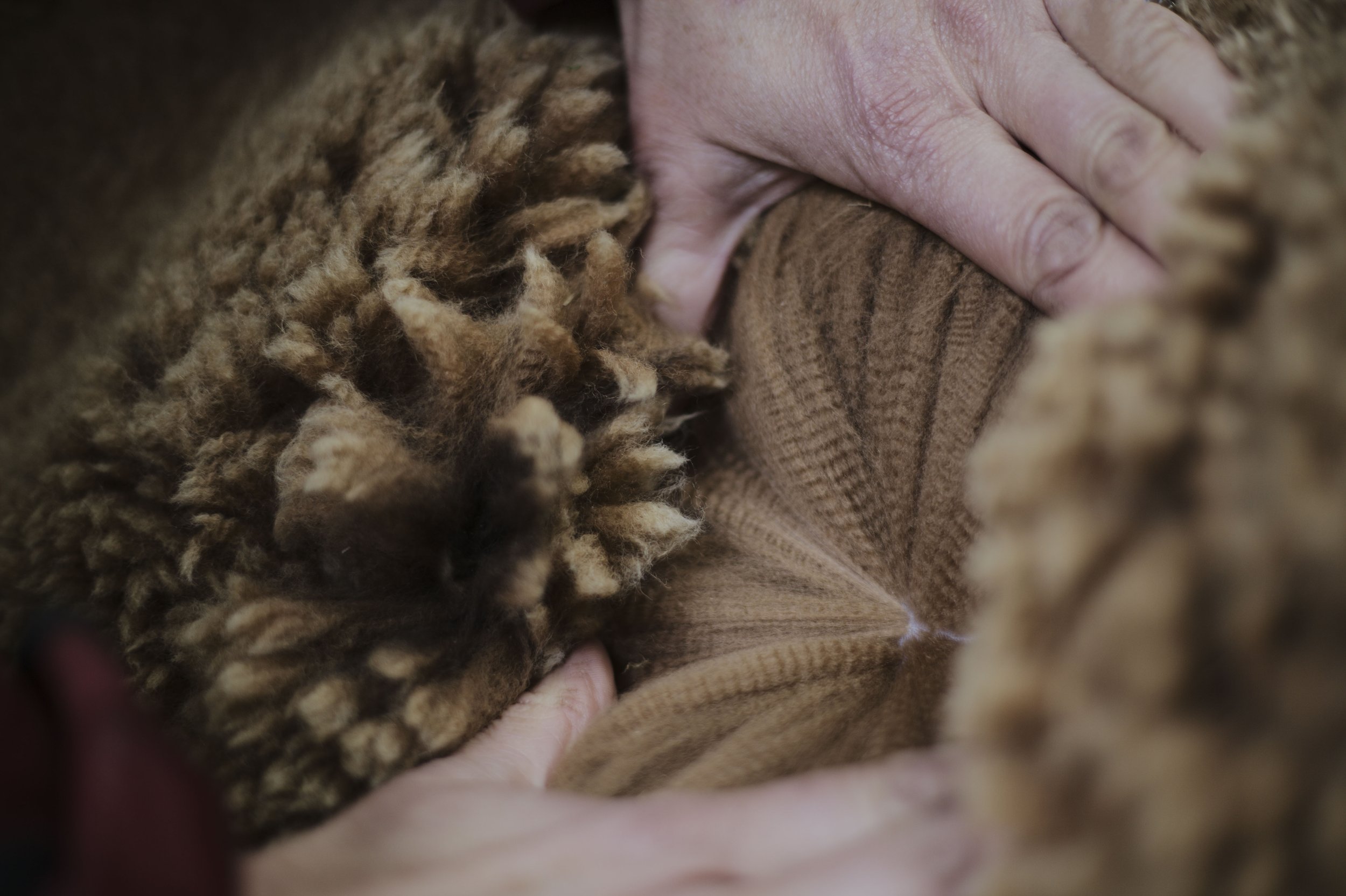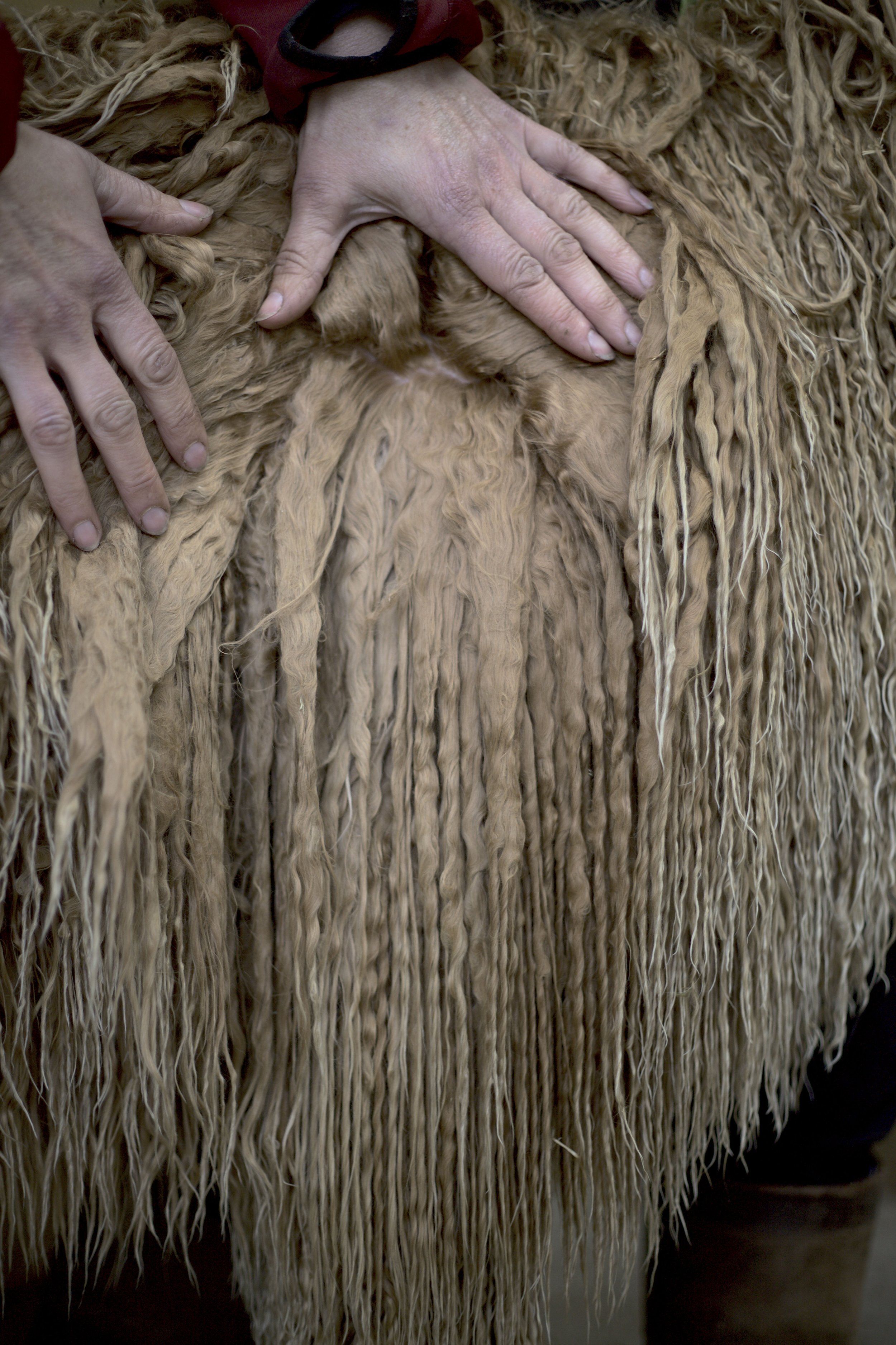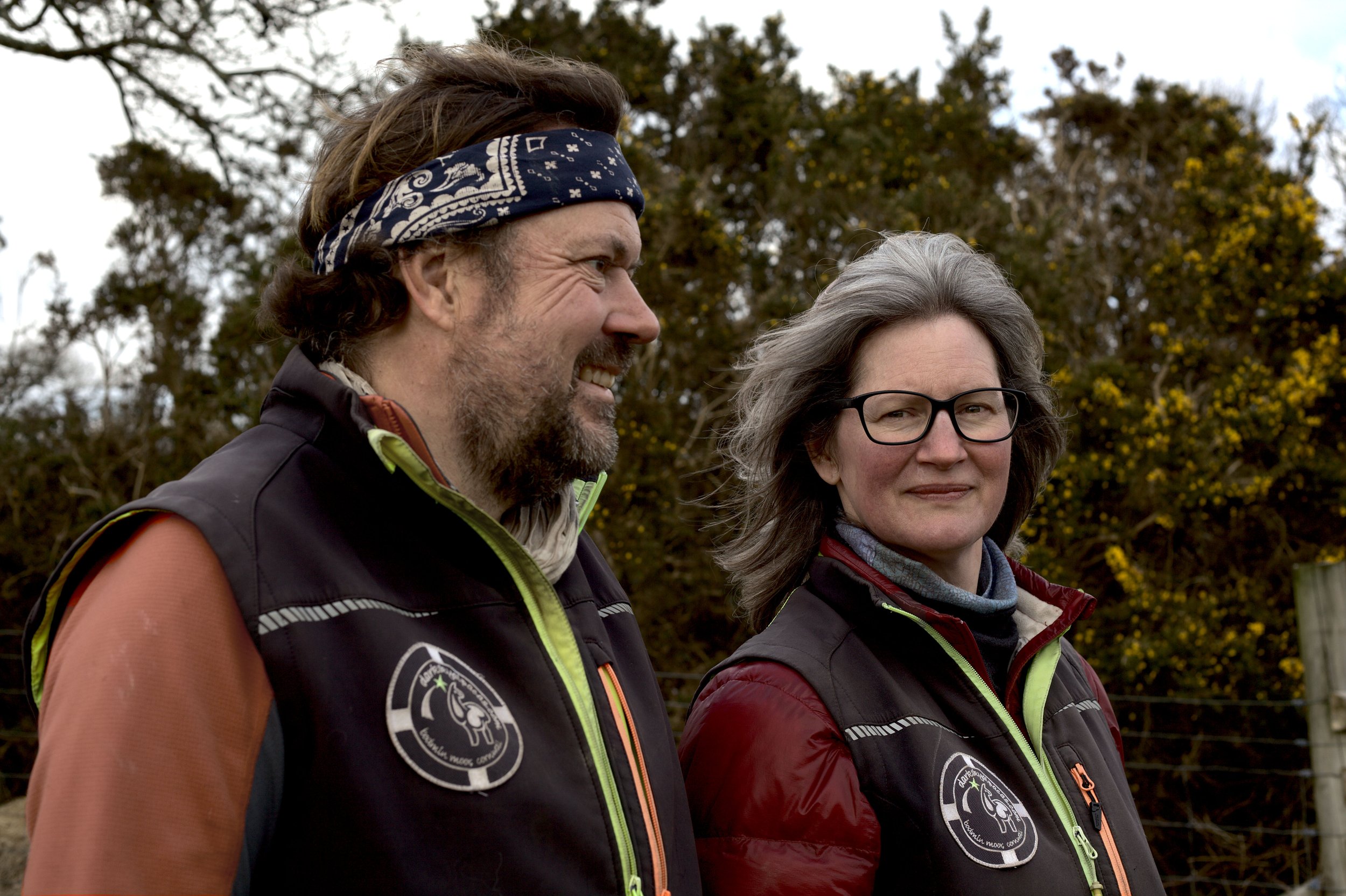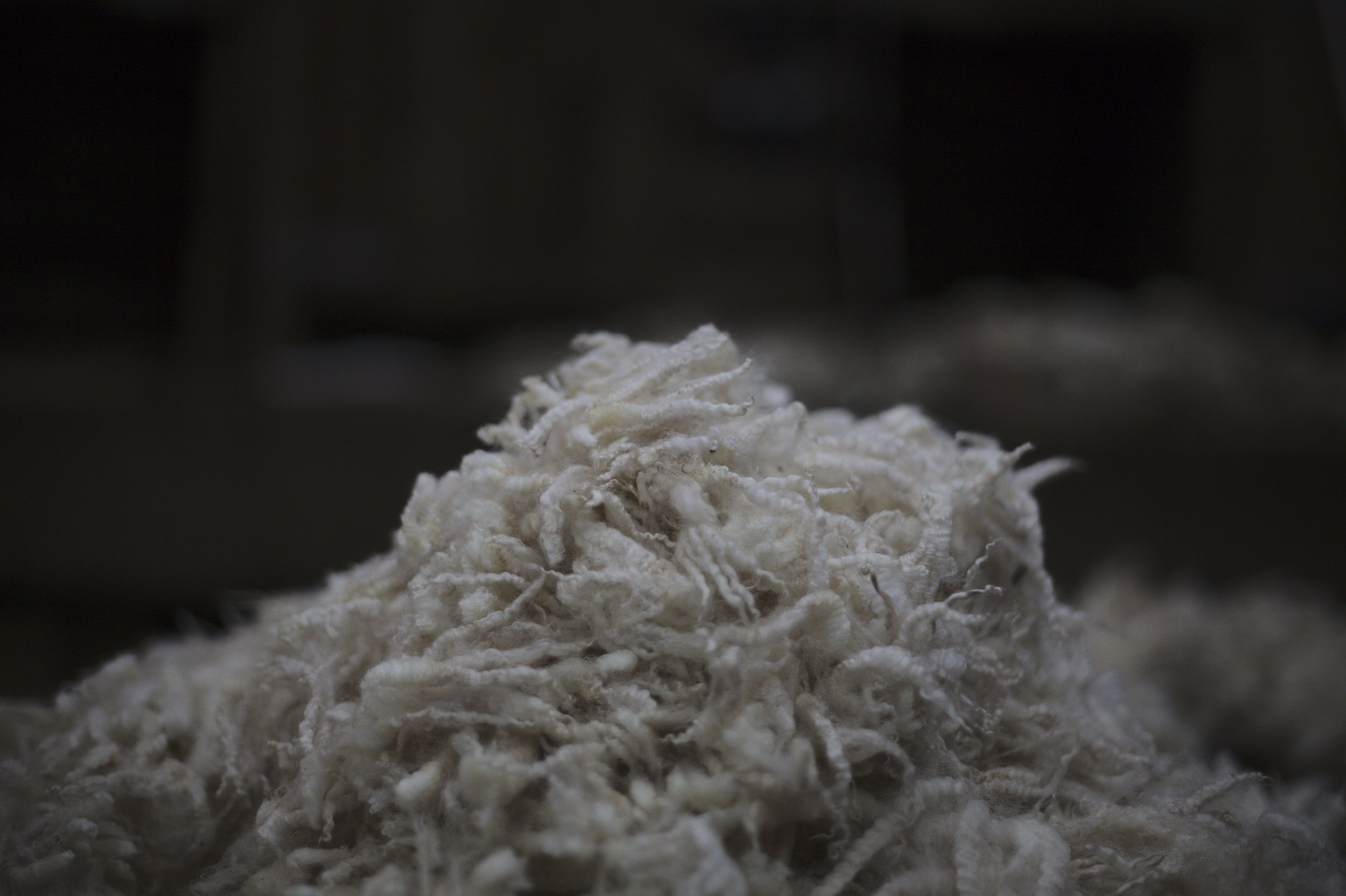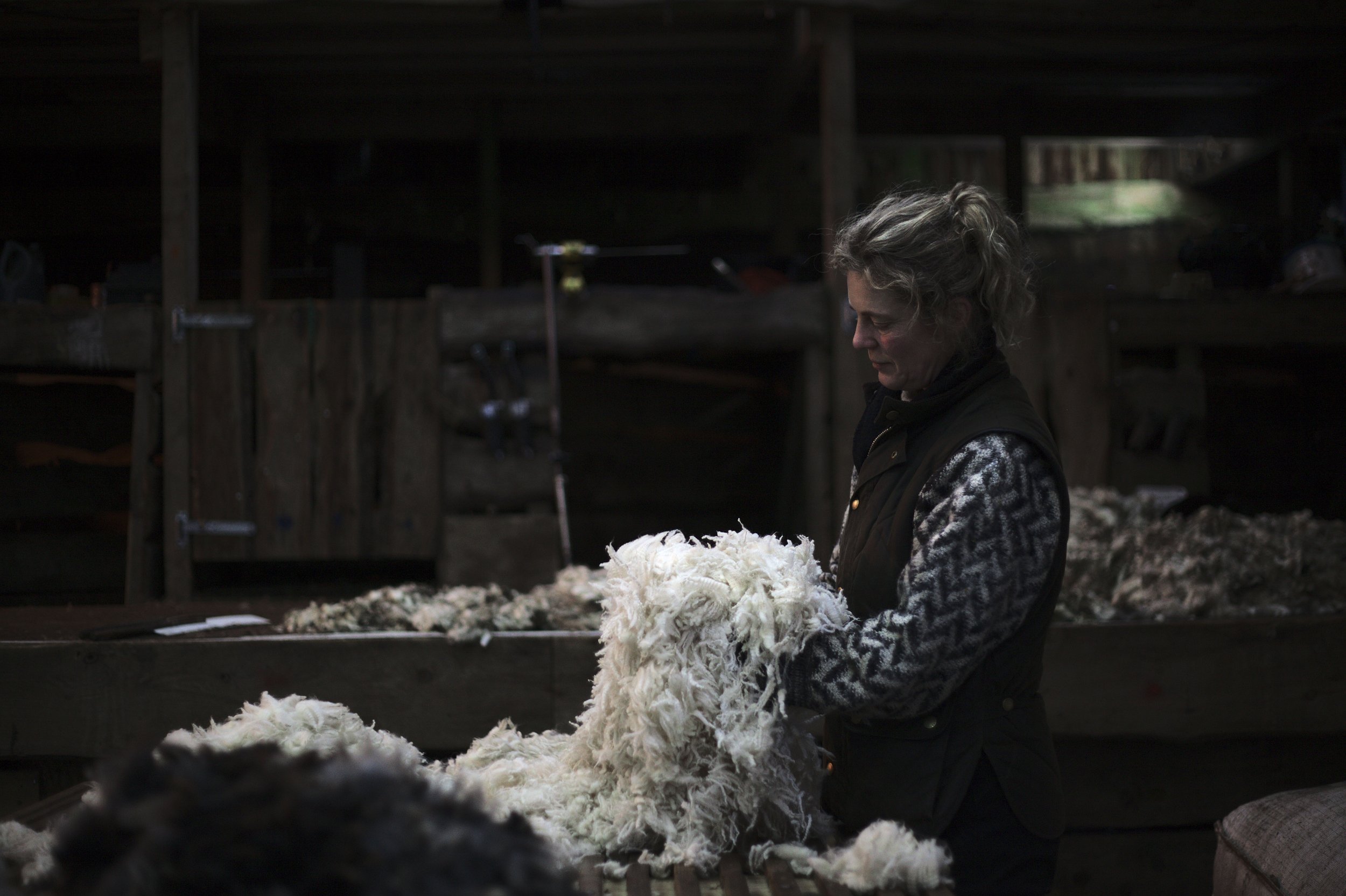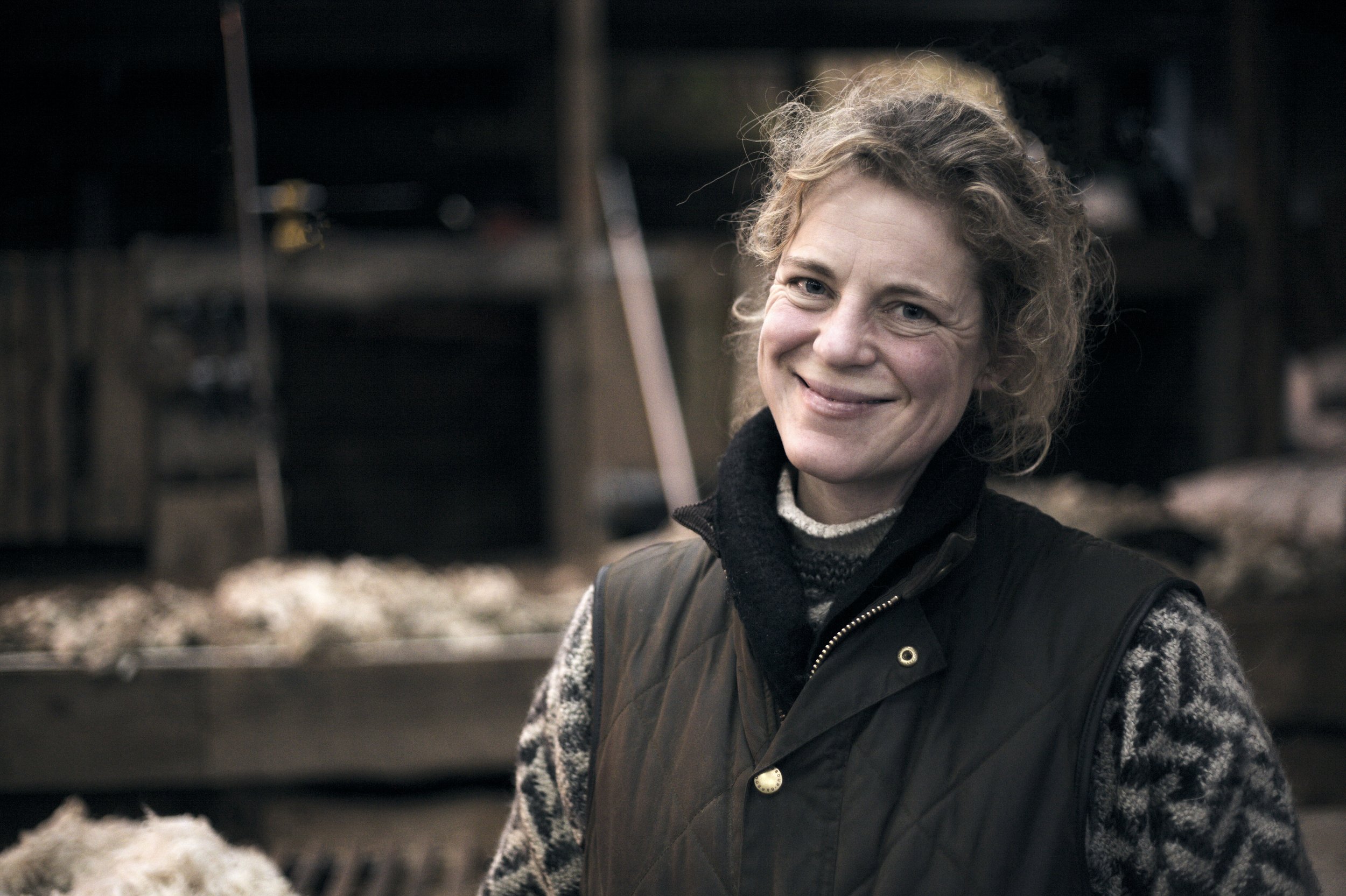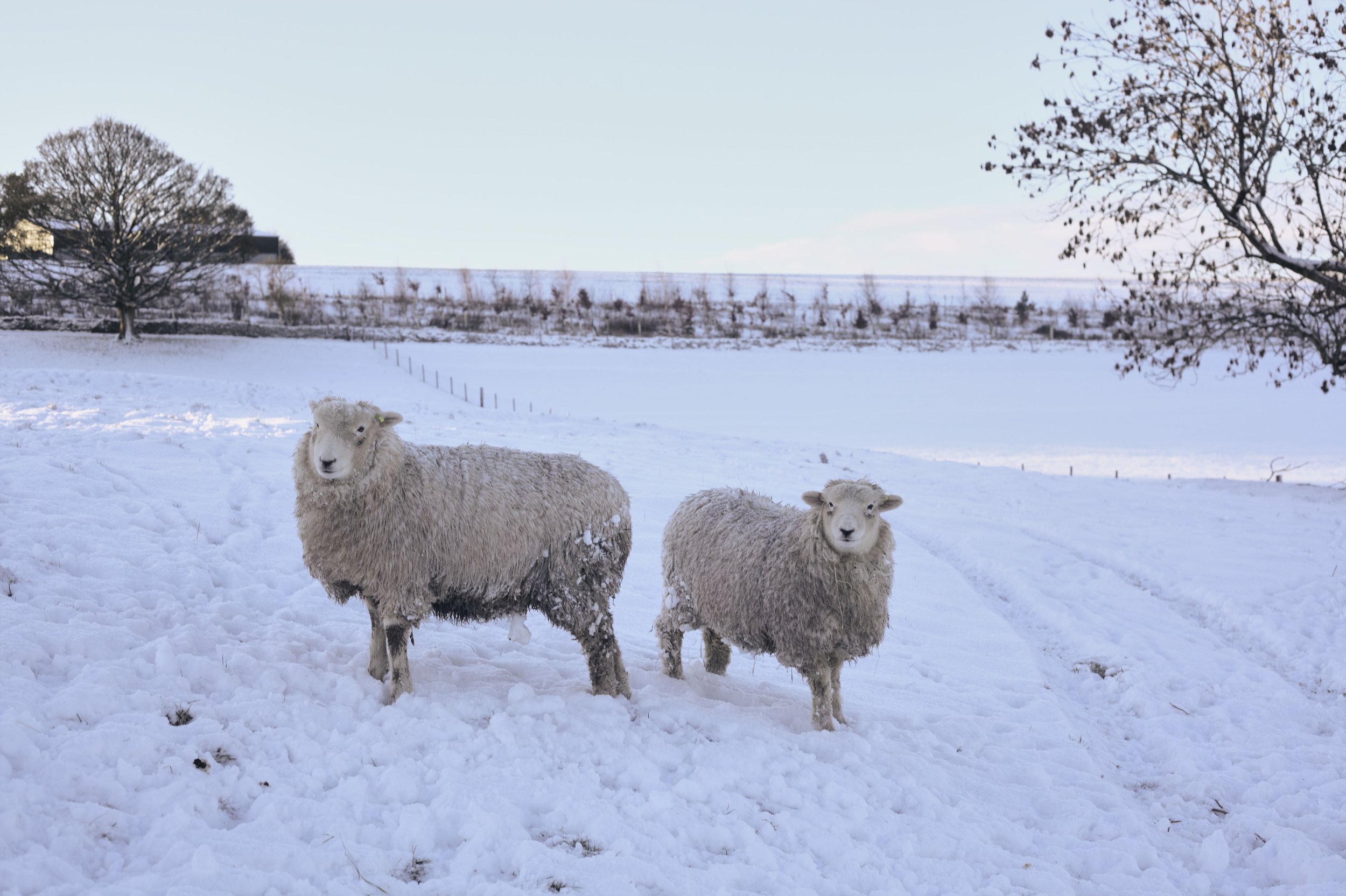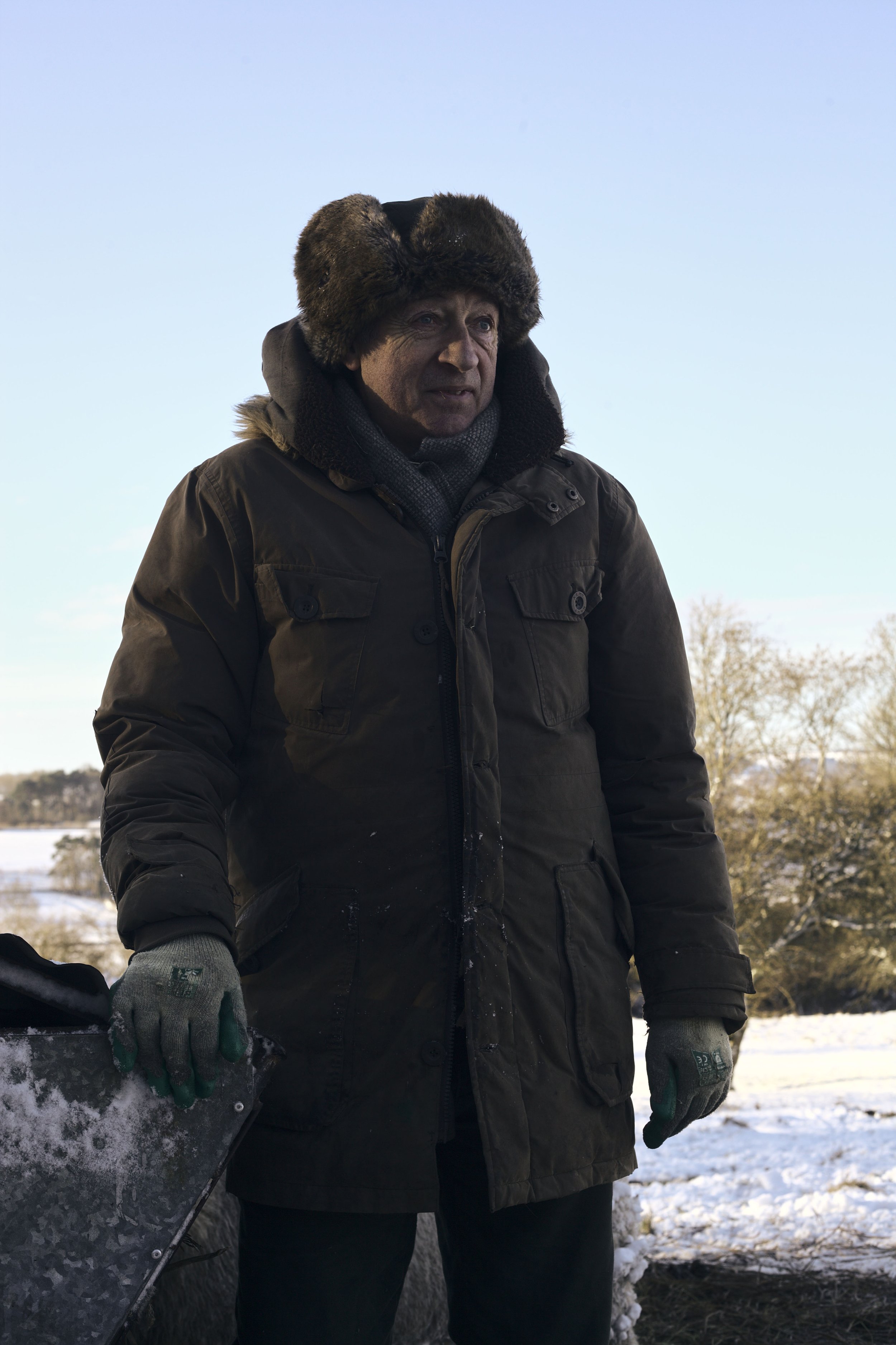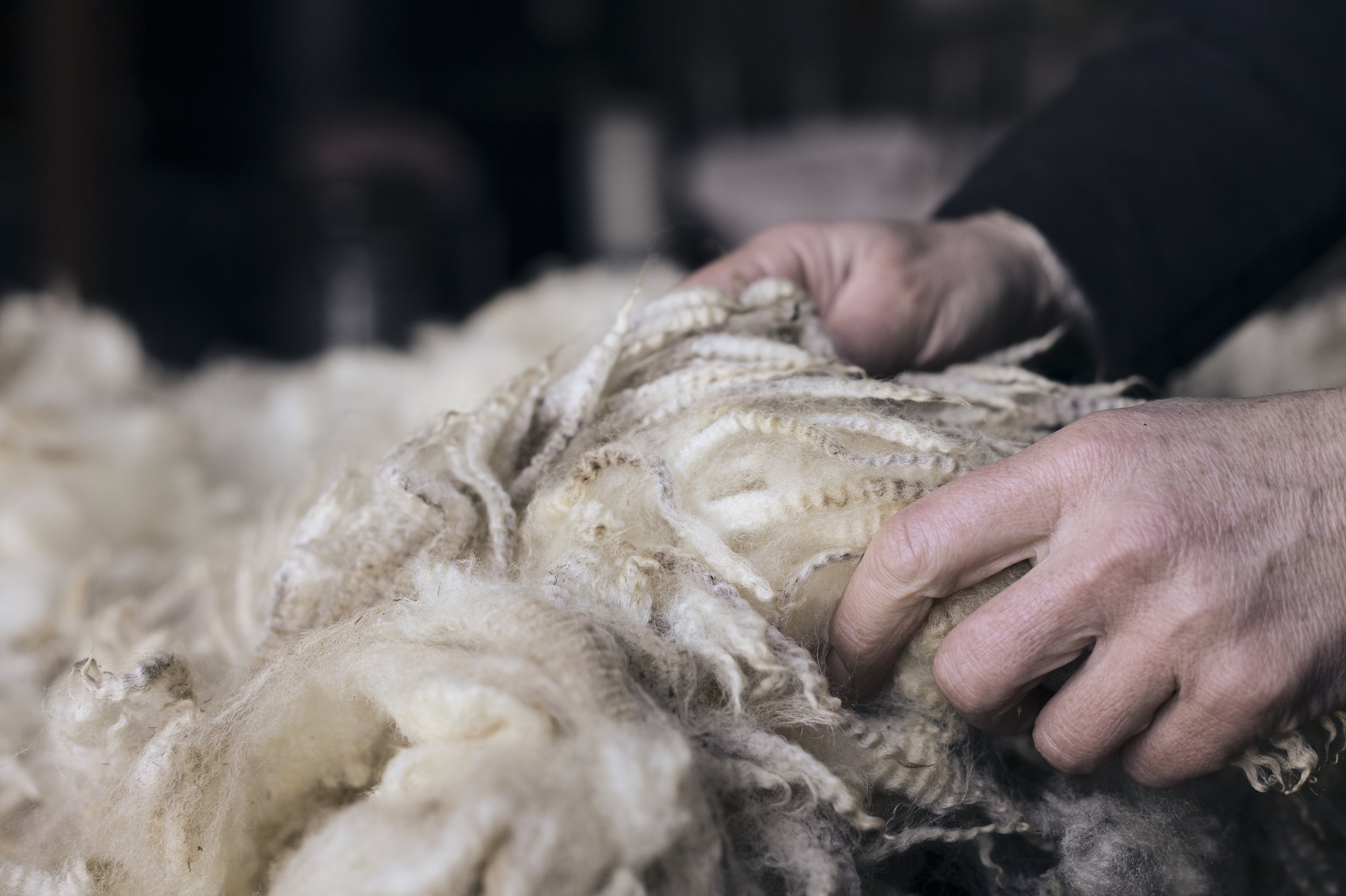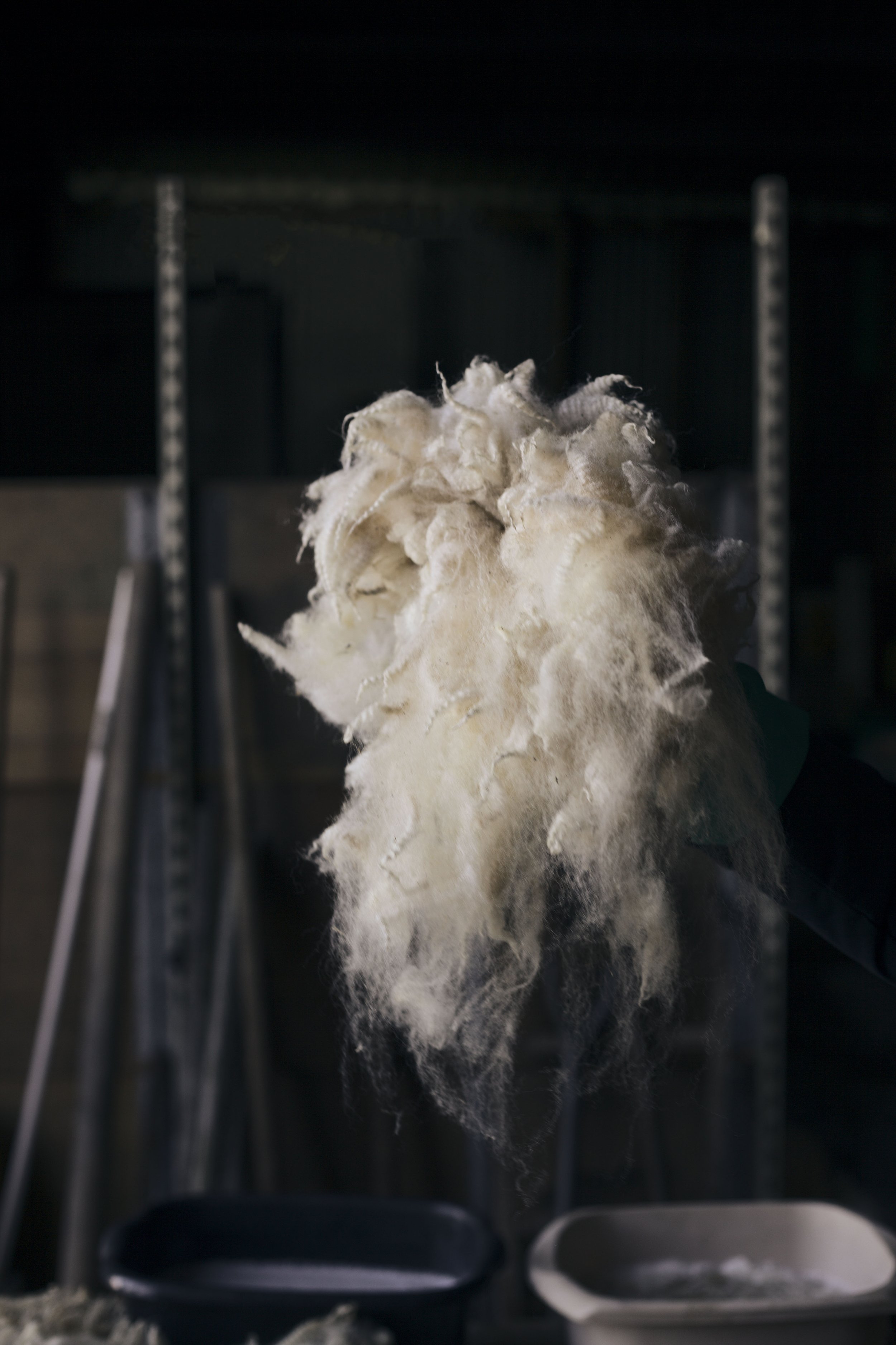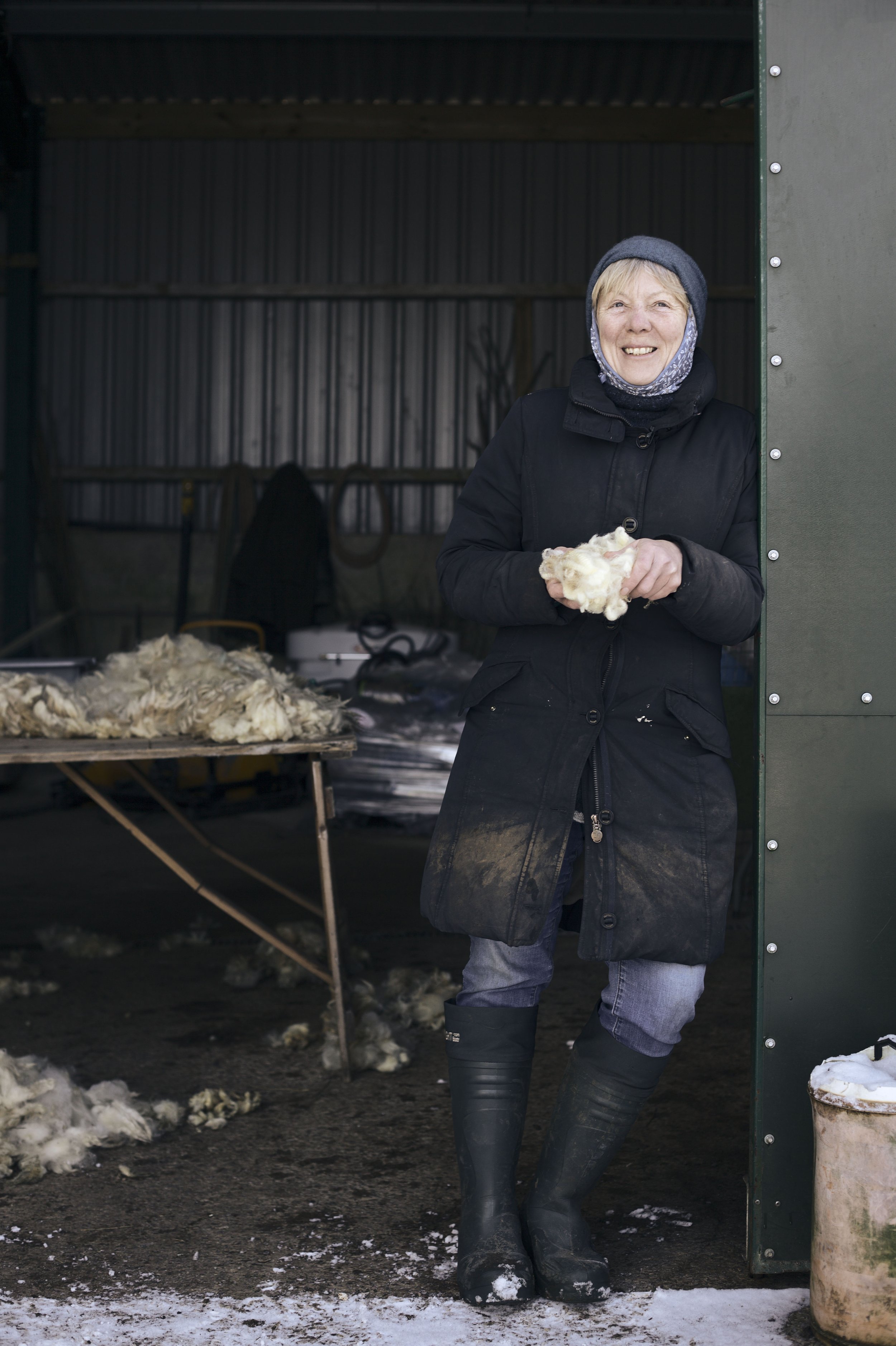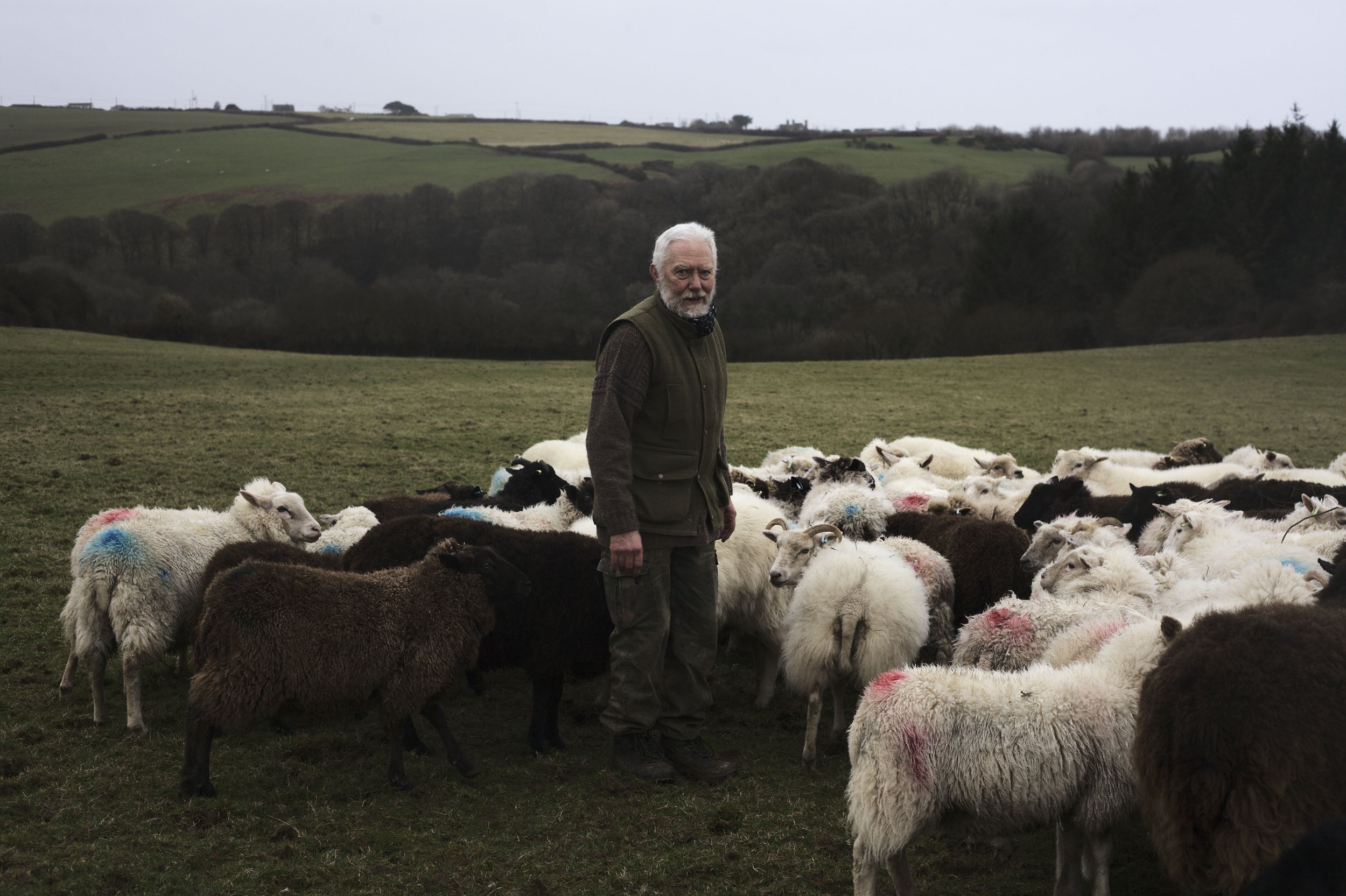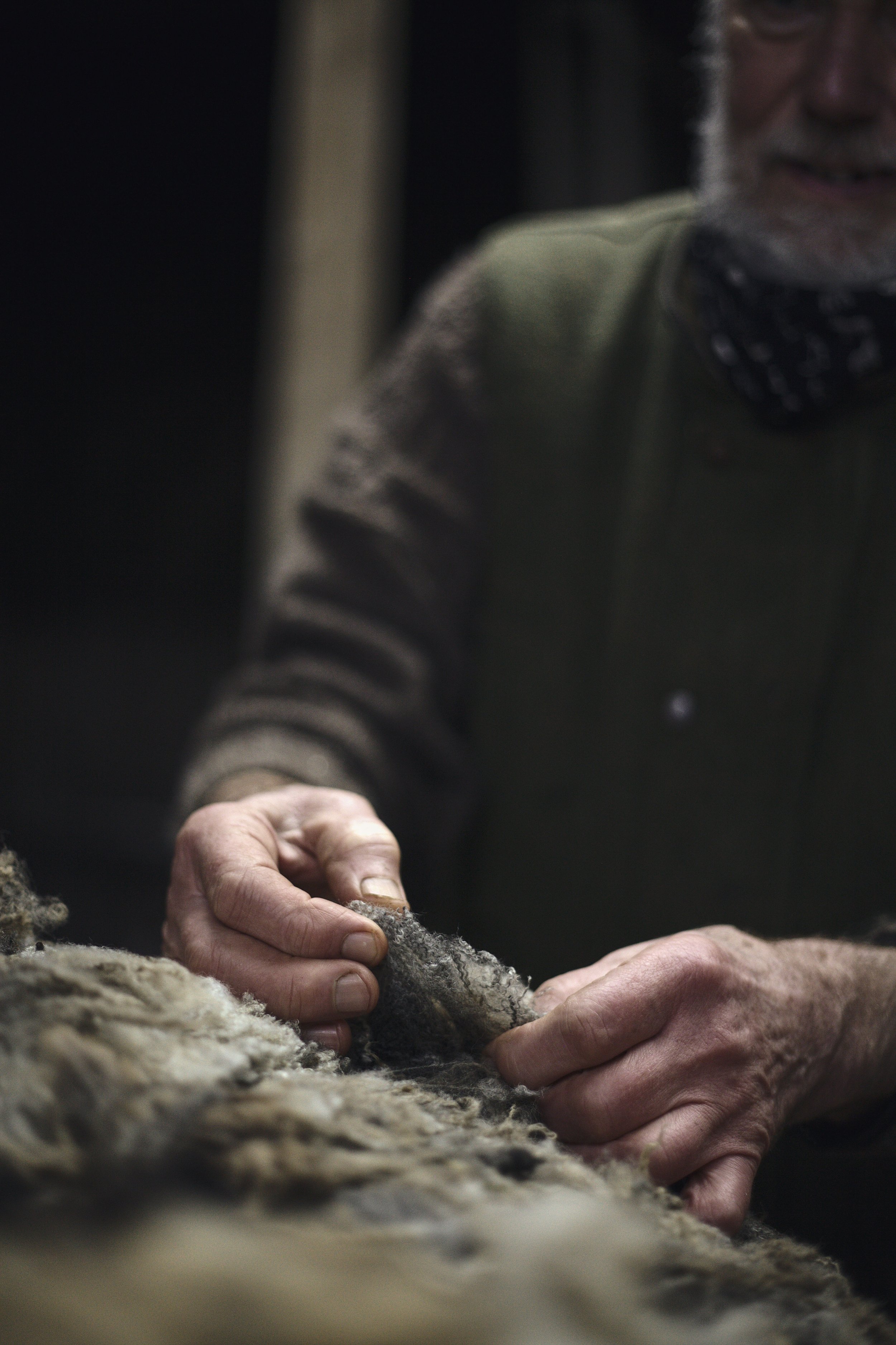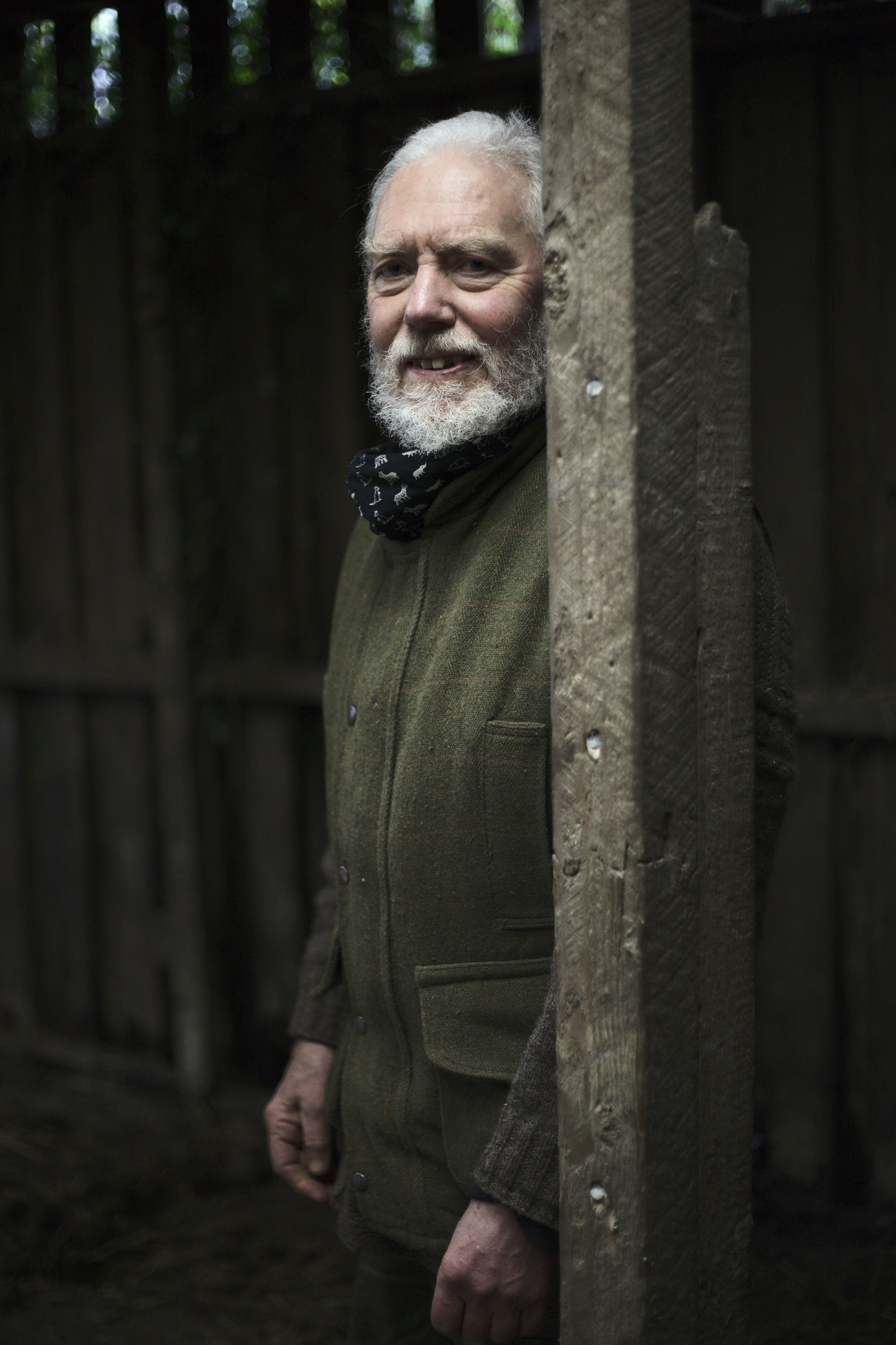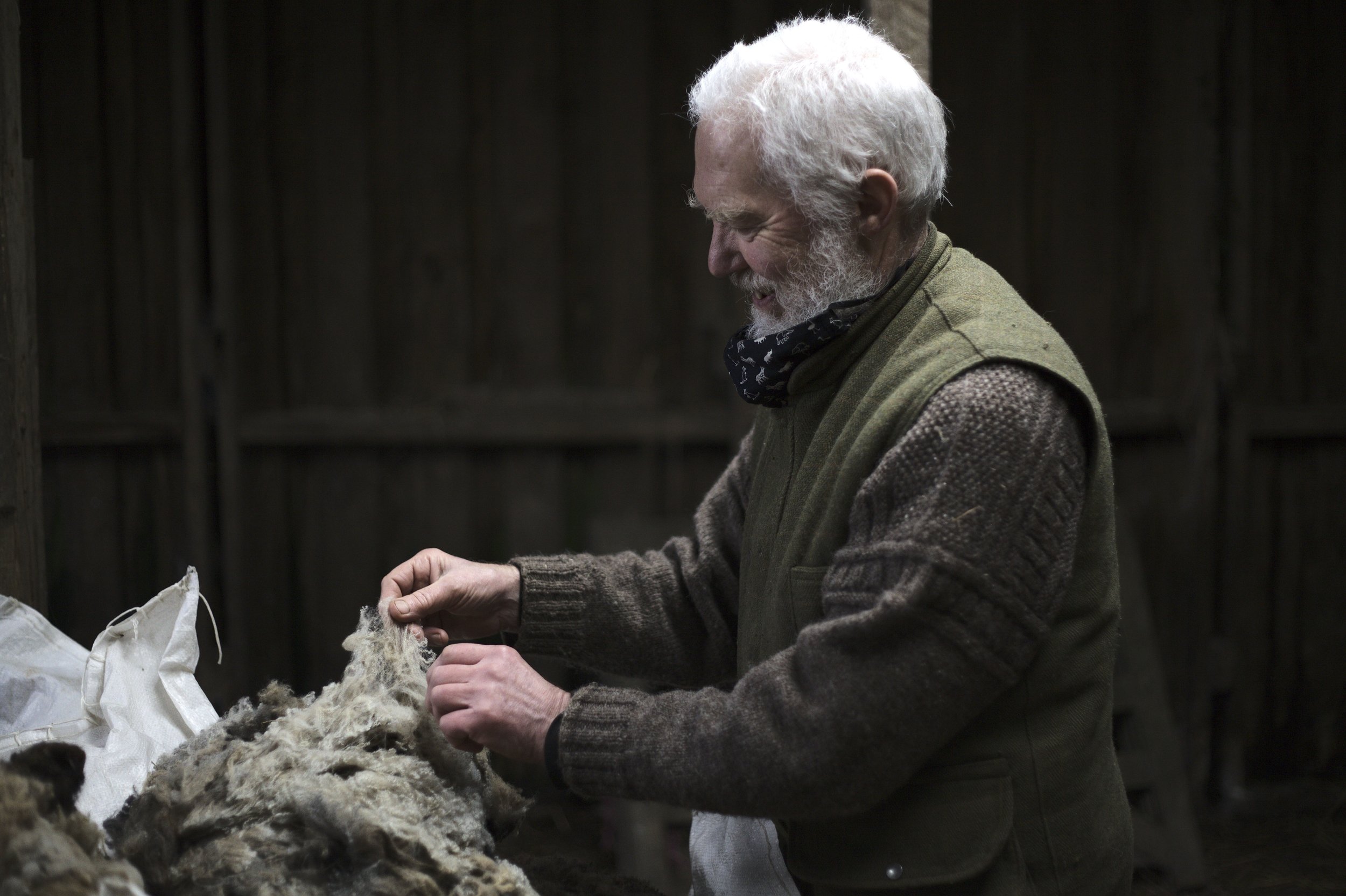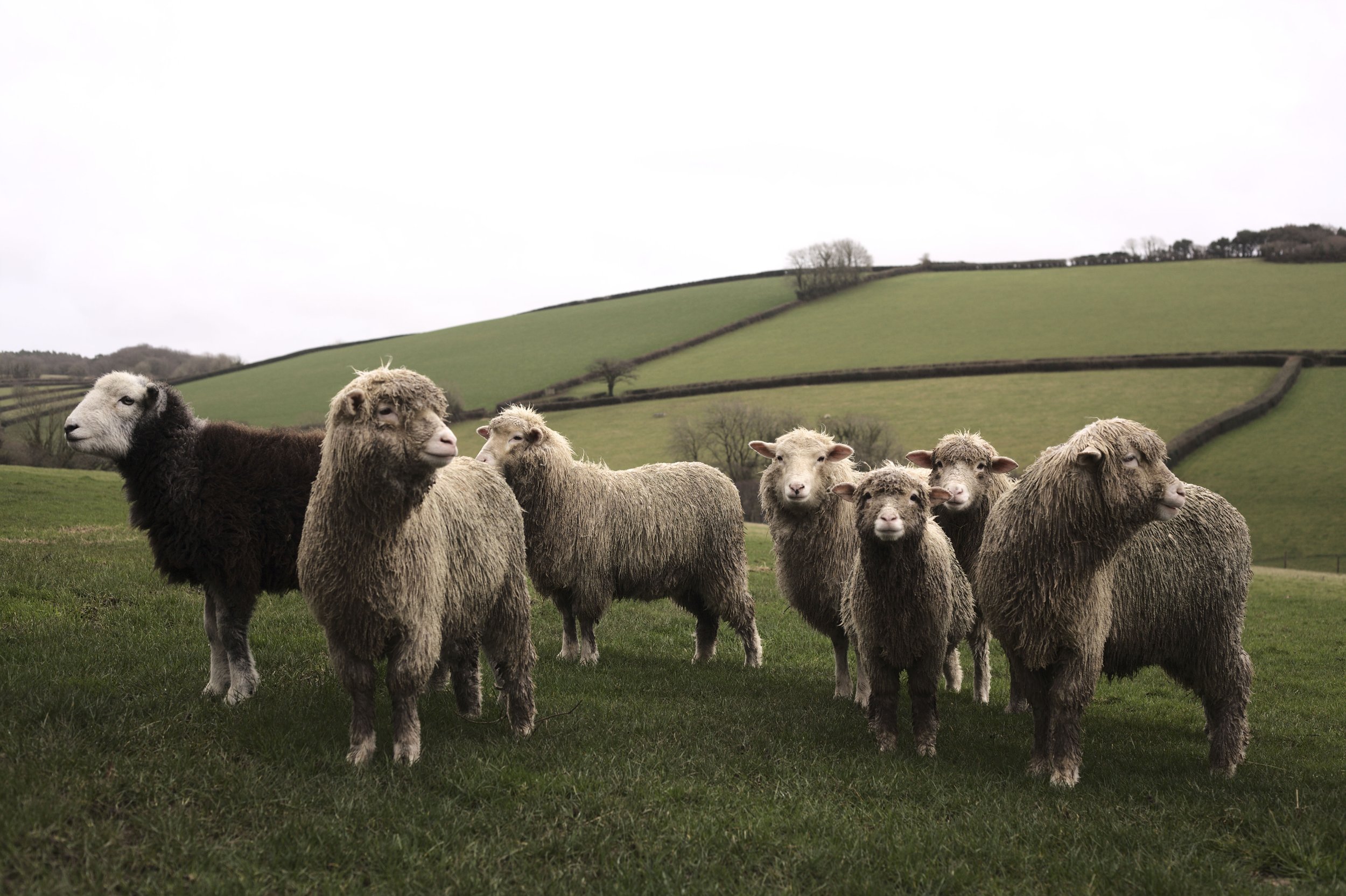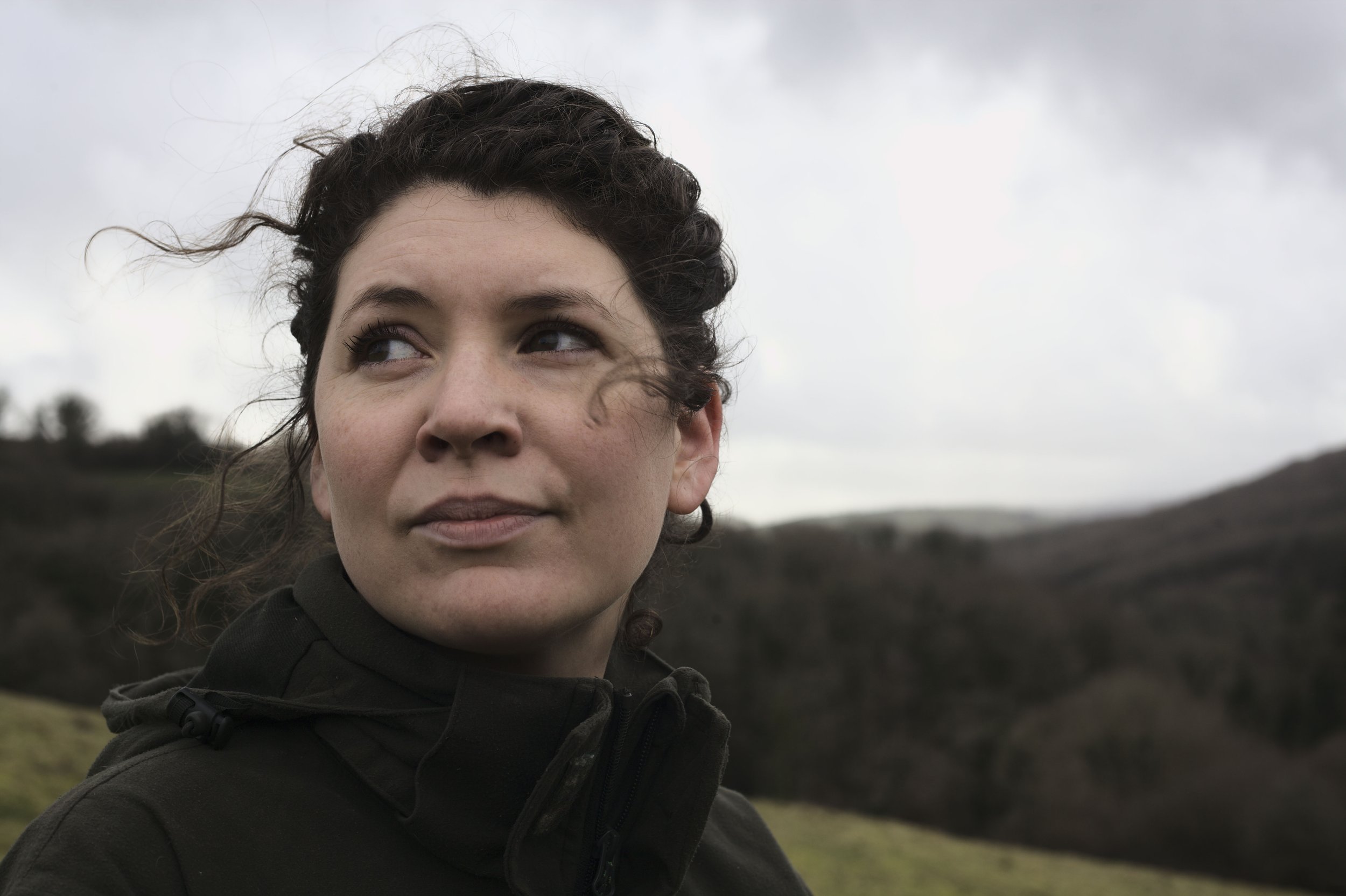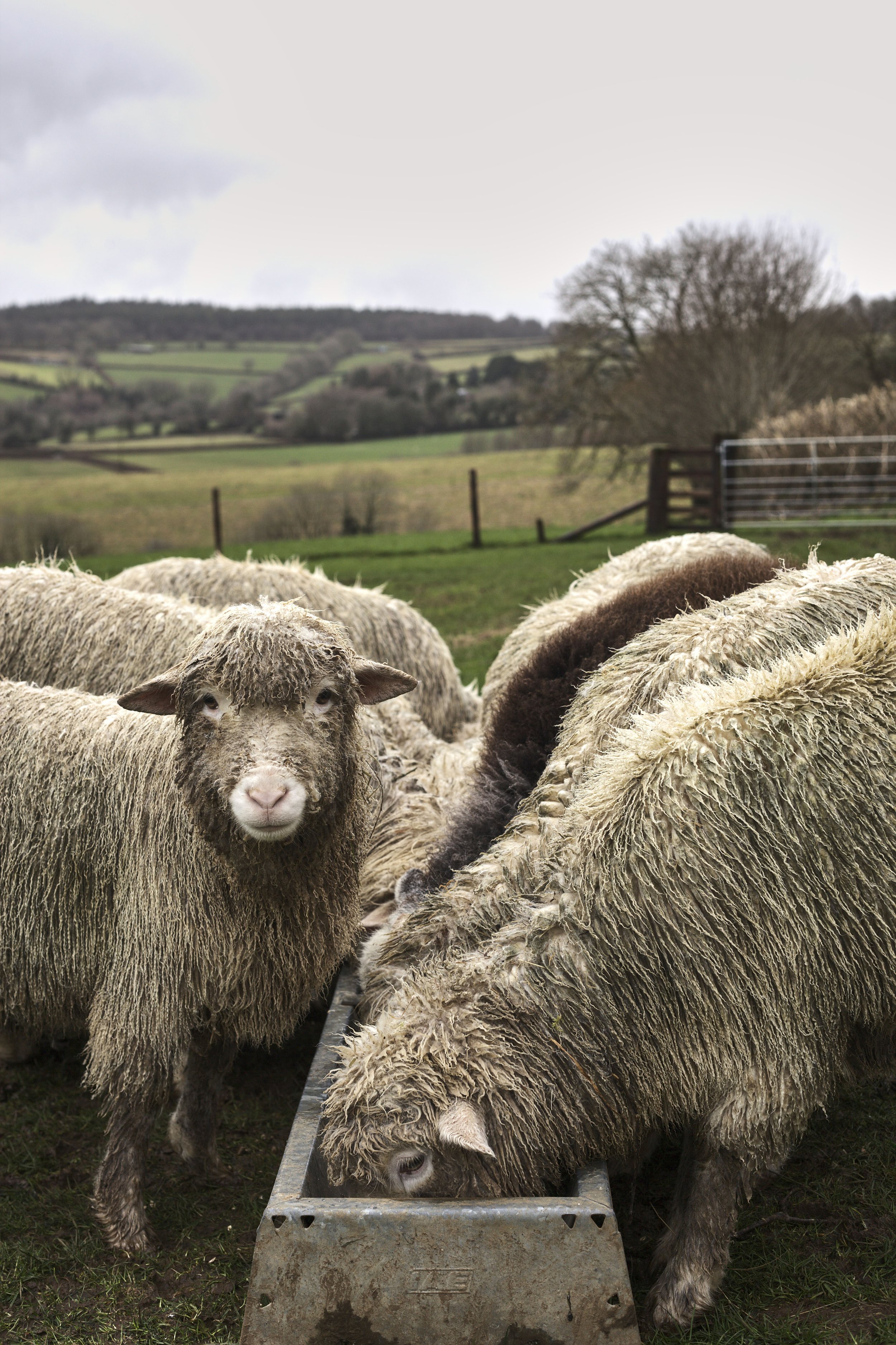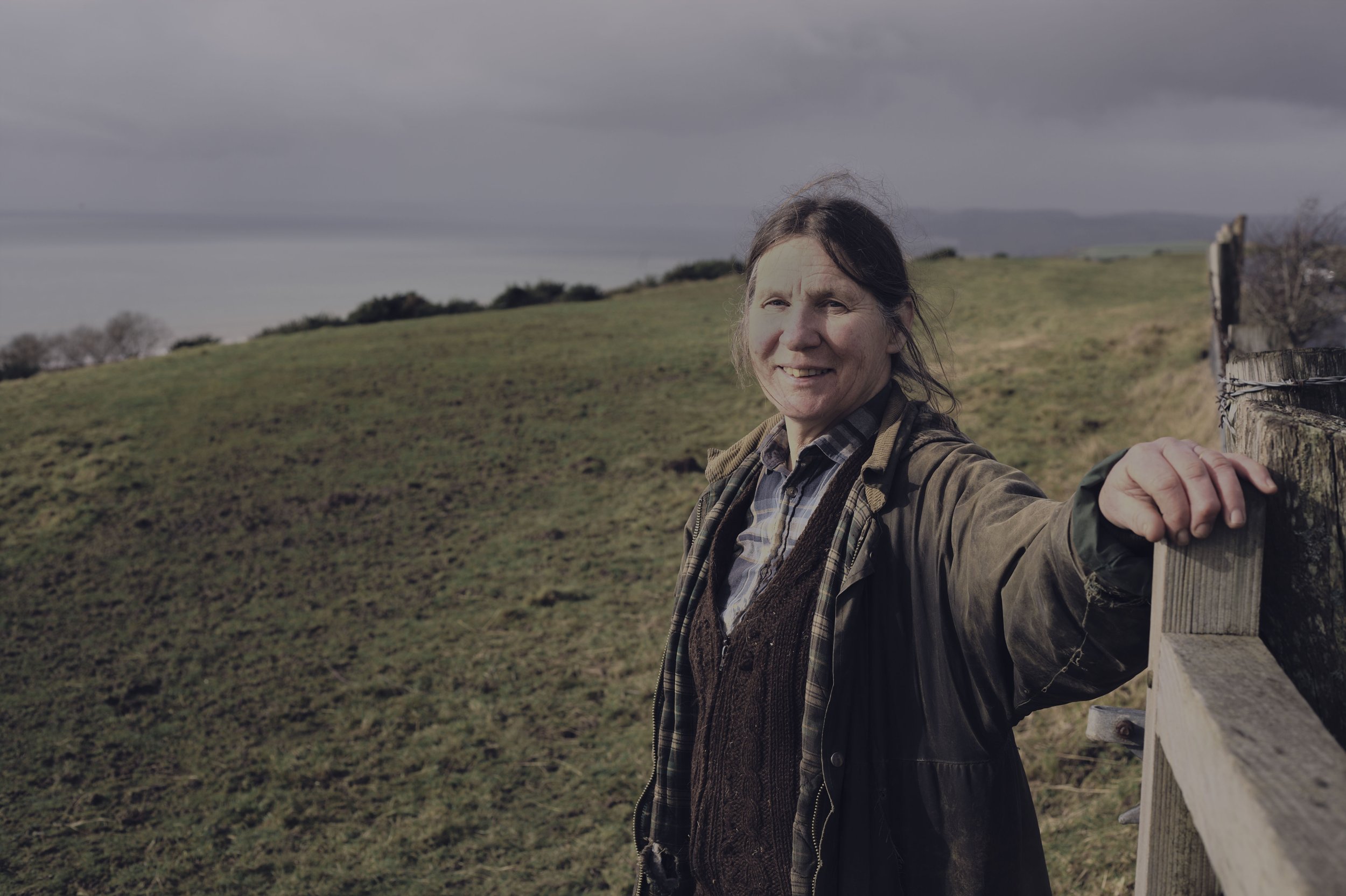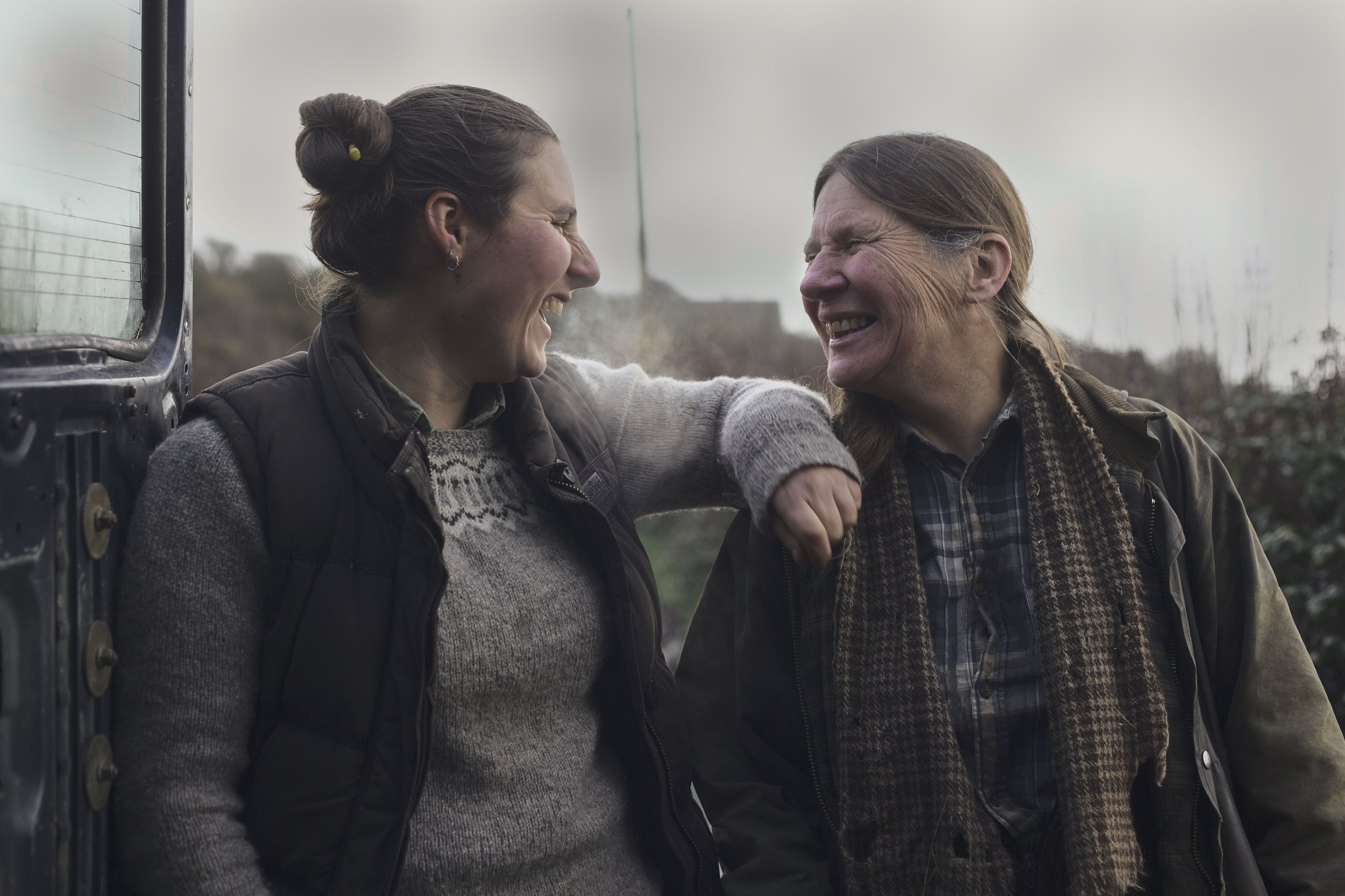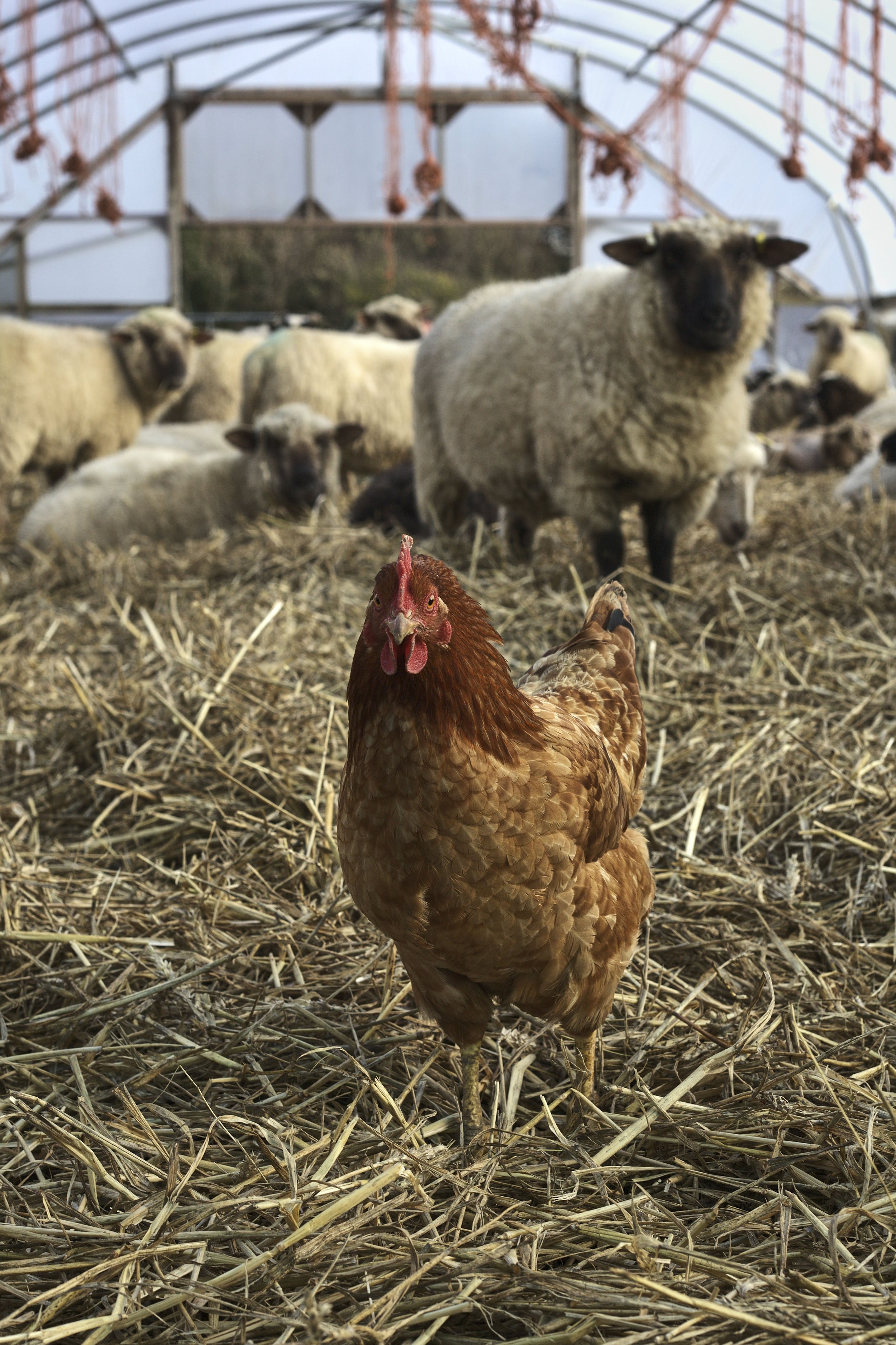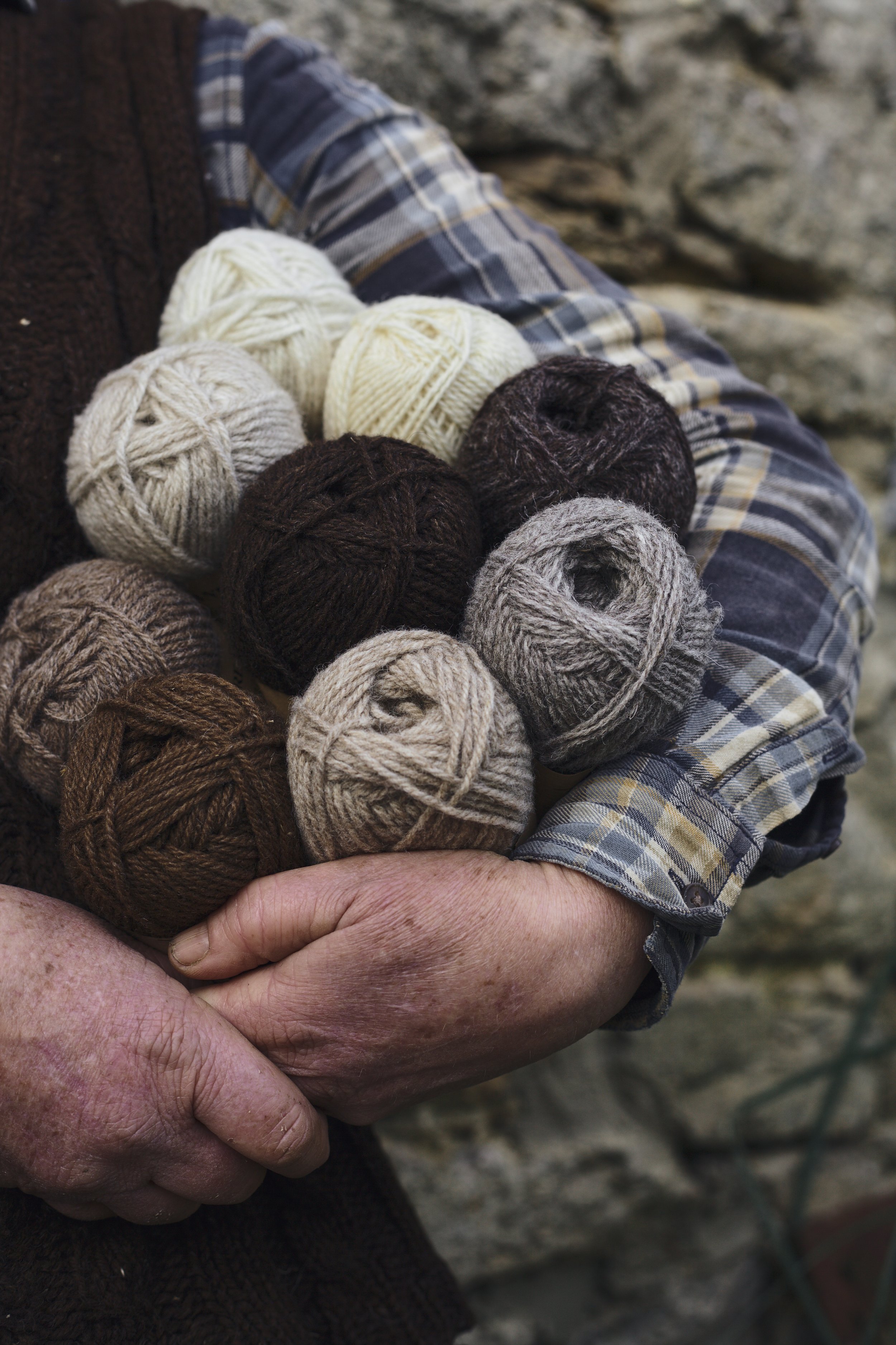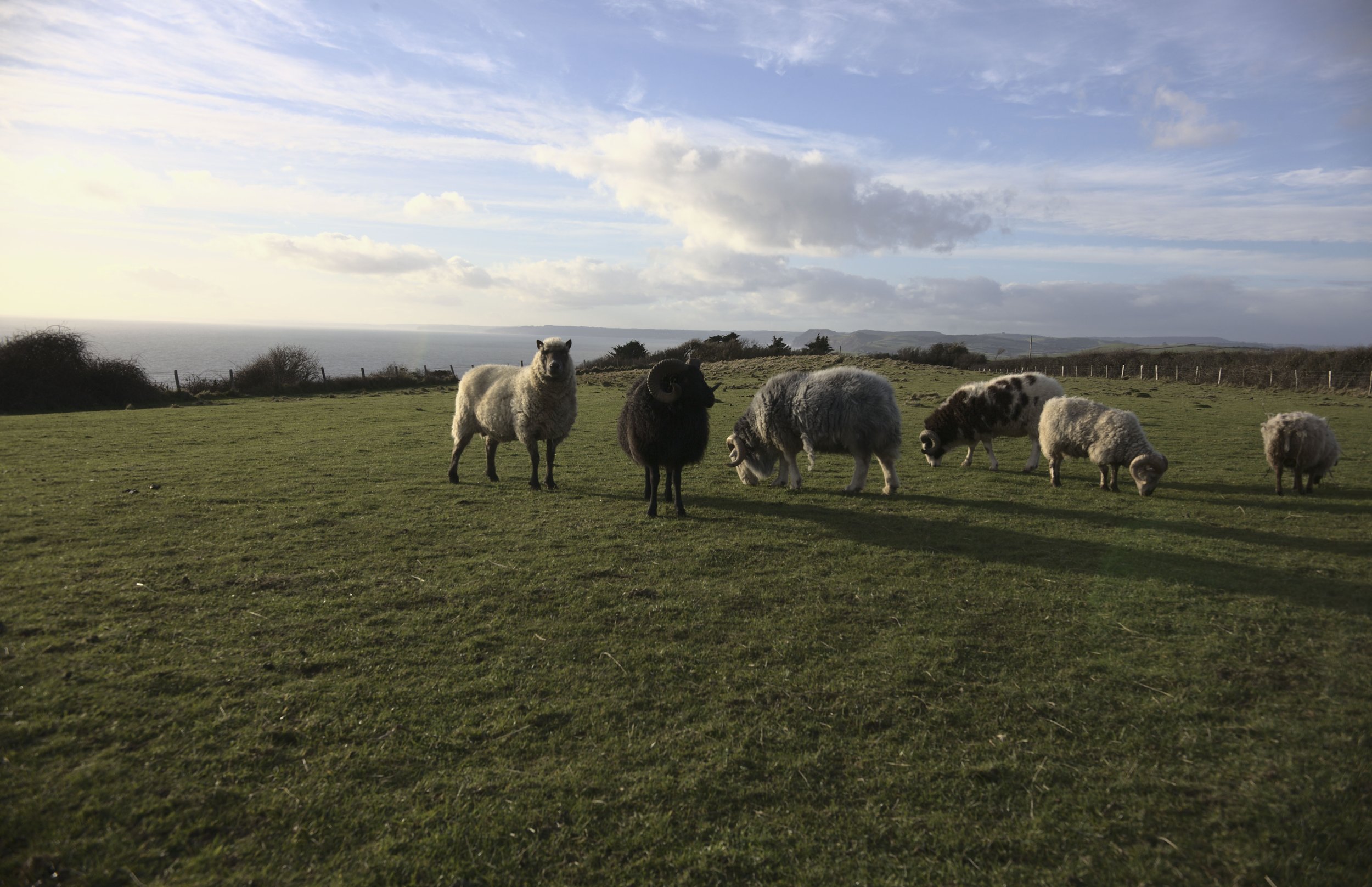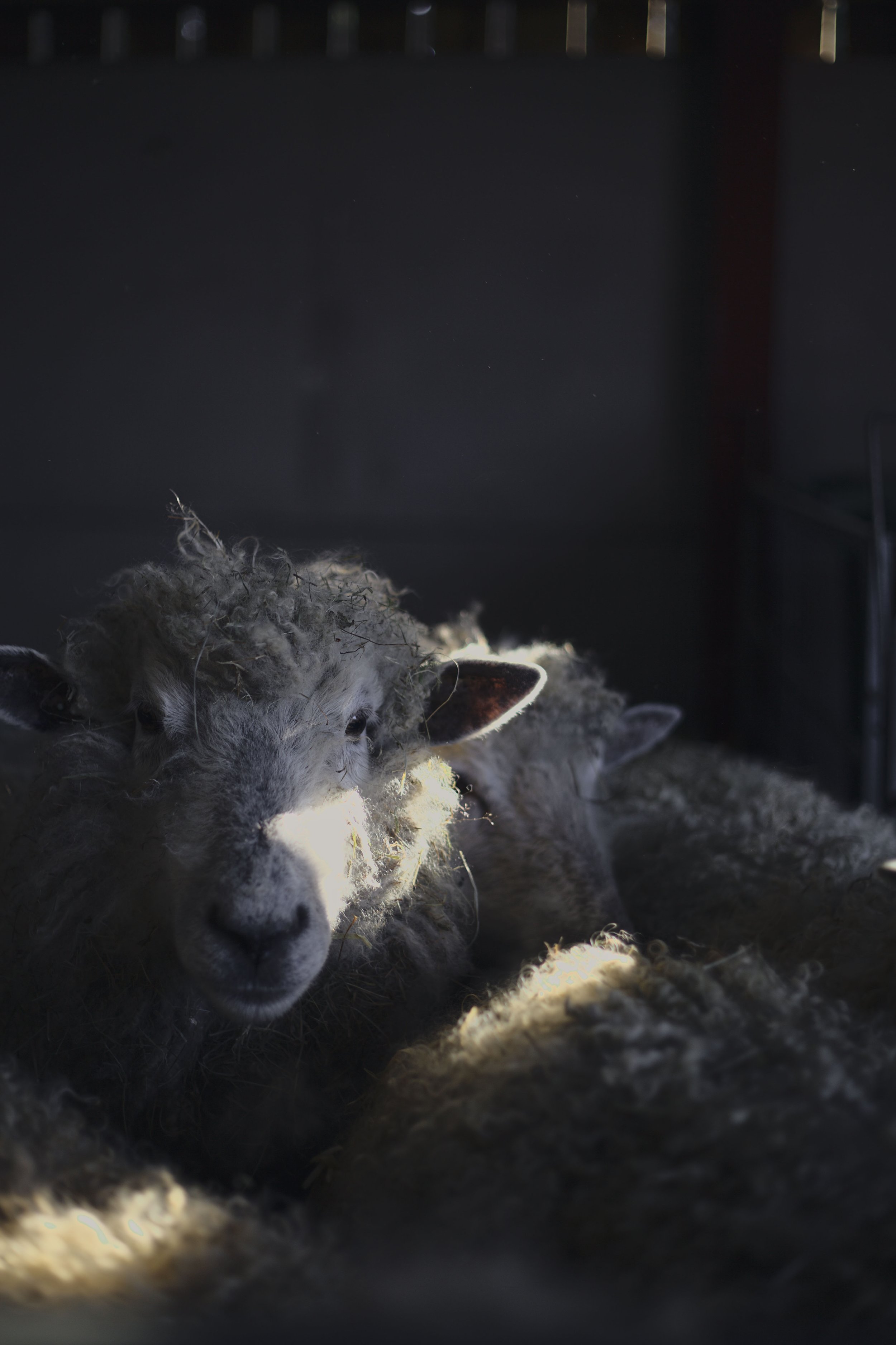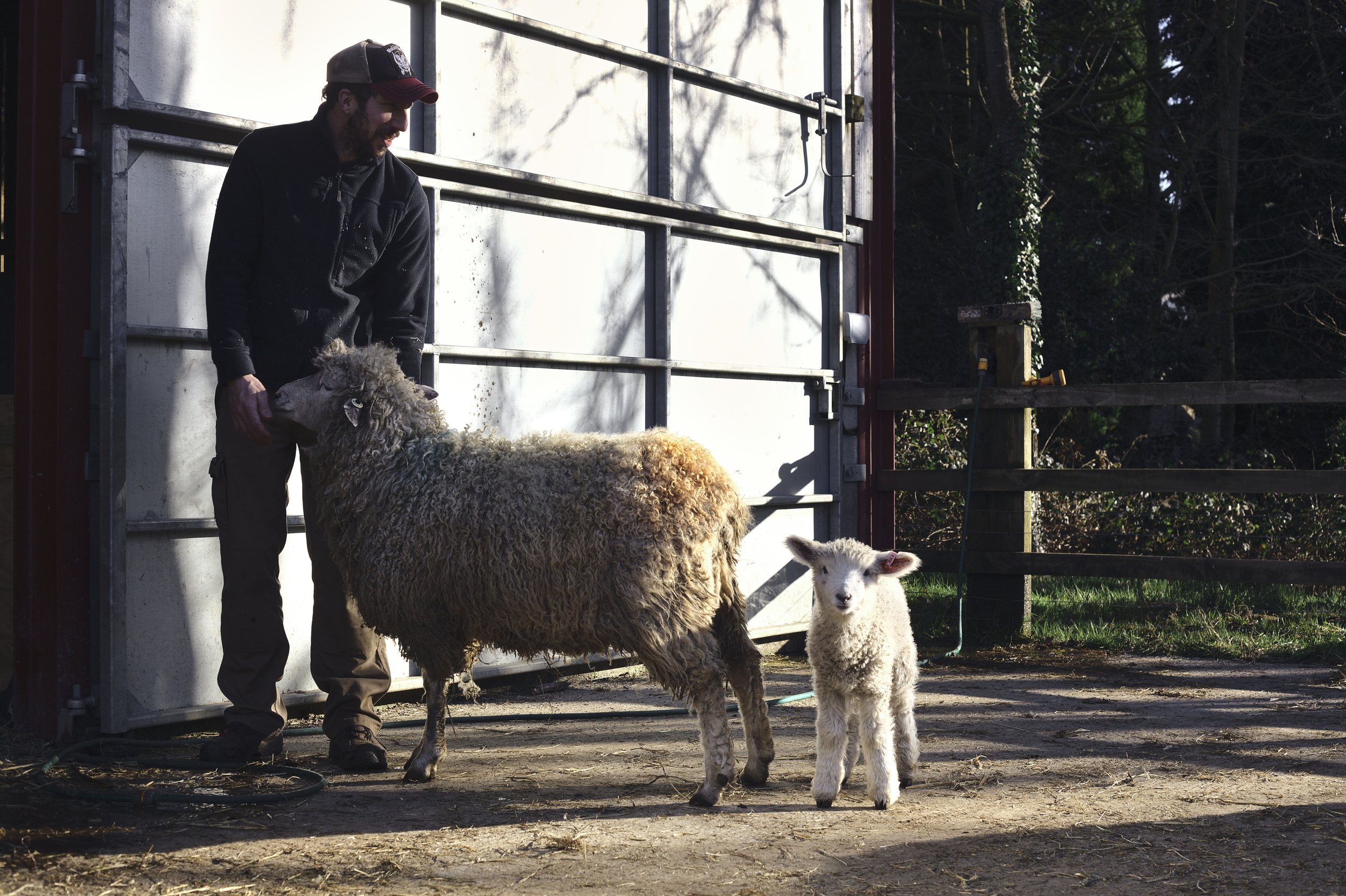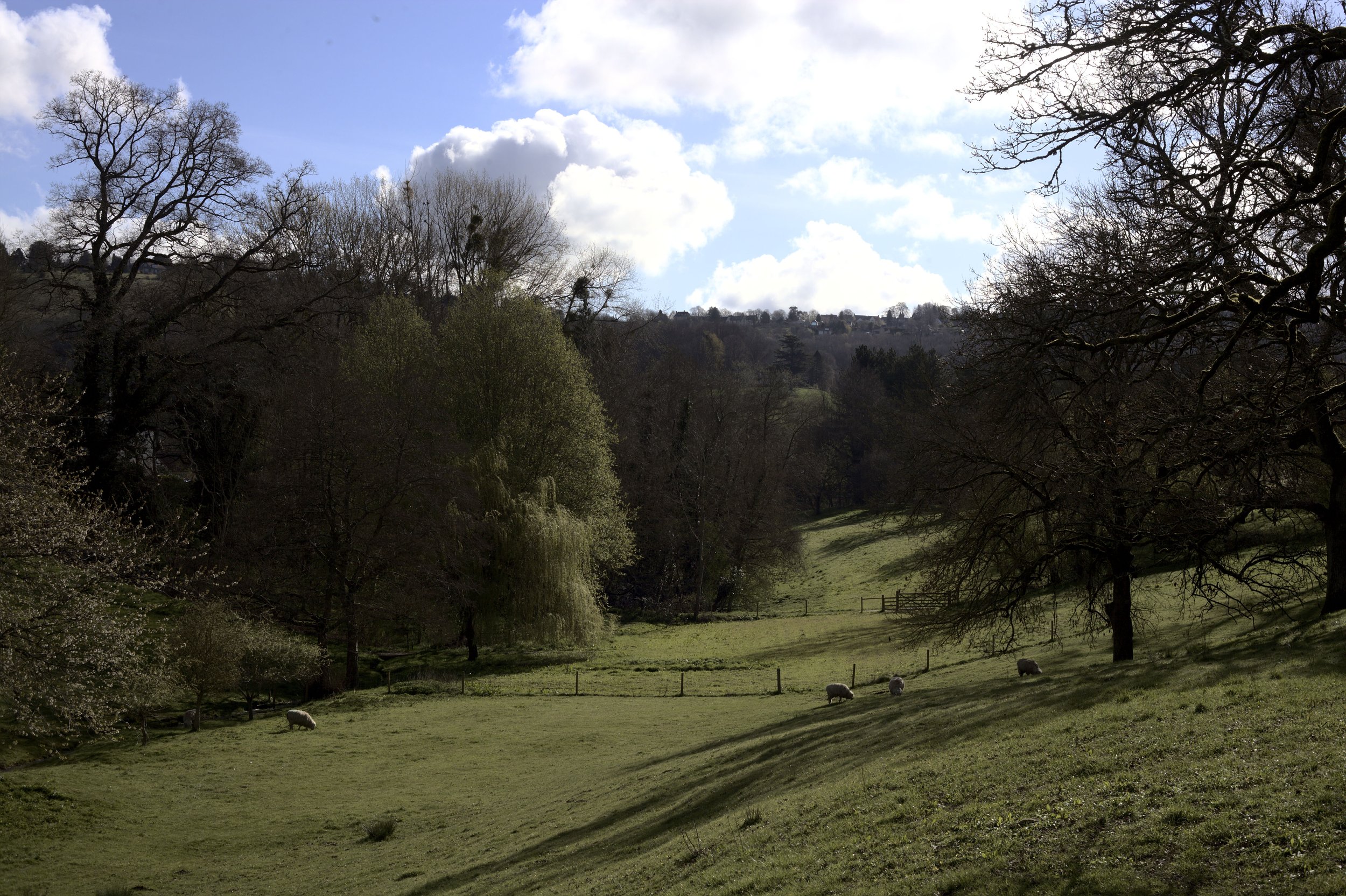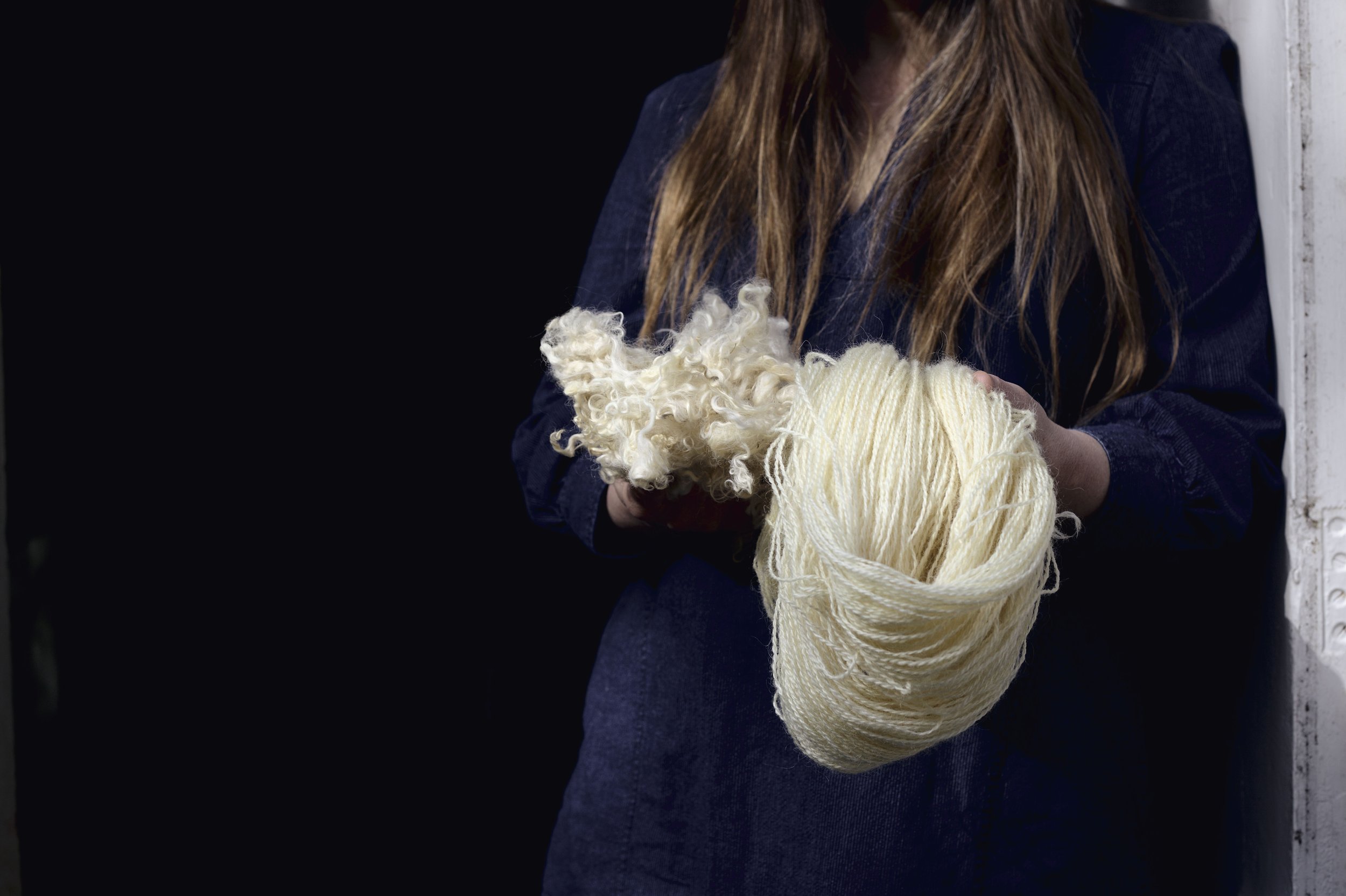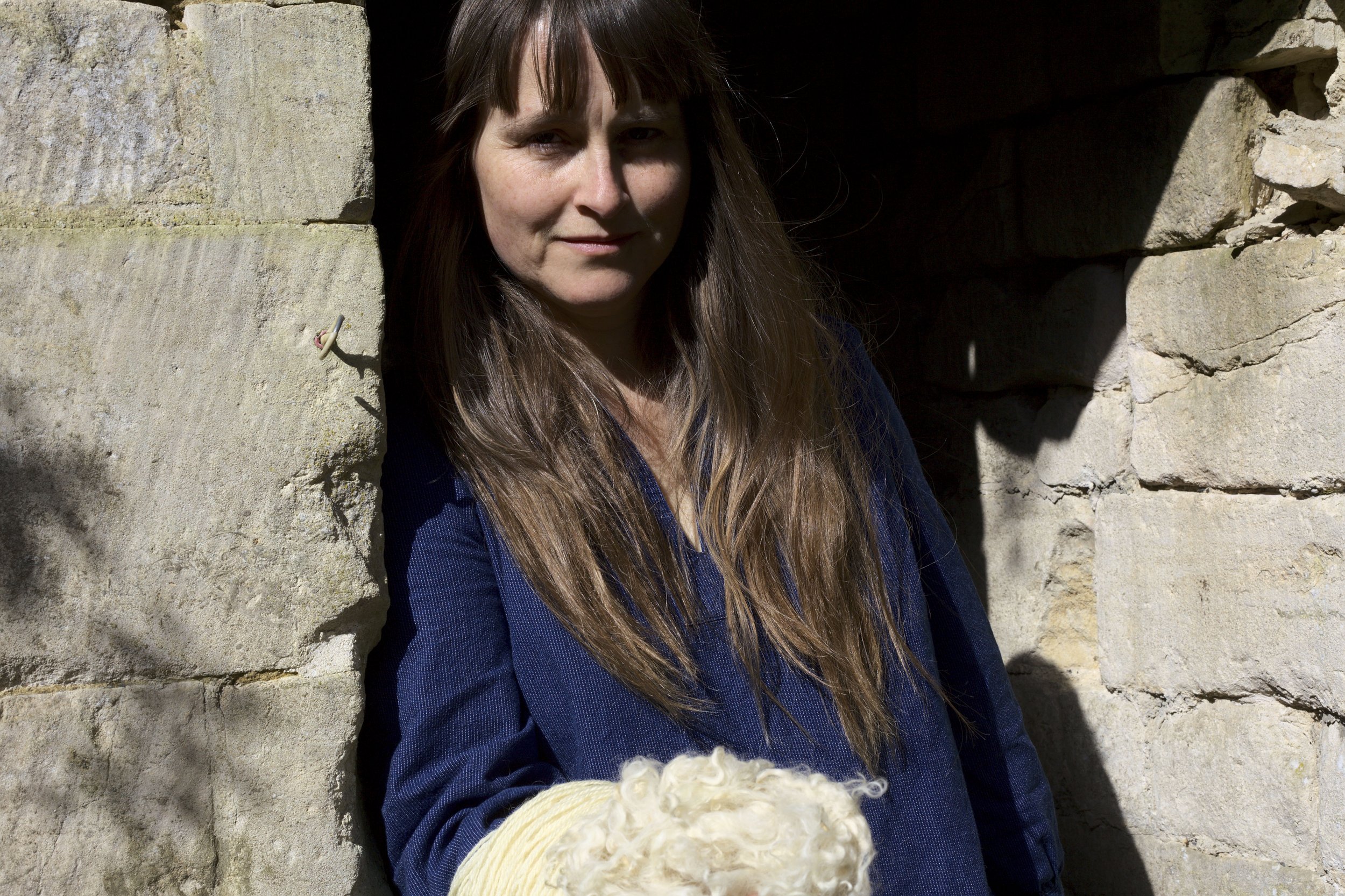Farming Fashion: Faces and Landscapes of South West England Fiber Farms
Photo: Hatty Bell
A goal of the UK fibershed movement over the last two years has been to bring together the worlds of fashion and farming. Not only conversation, but also working collaborations have been catalyzed into action. Within the last two years, regional fibersheds have seen more queries from brands of all sizes looking to onshore their sourcing and manufacture after decades of being overseas.
In early 2021, I went on the road with filmmaker and photographer Hatty Bell to discover and profile—across media—seven fiber farms across South West England from Gloucestershire to Cornwall. We chose each location for how they further advance the commercial production of fiber, specifically sheep and alpaca fleece, from Middle Campscott, the first ever producer of organically certified yarns in the UK, using a triple purpose flock kept for meat, dairy and wool, to Fernhill Farm, now the first farm in the UK to produce a verifiable source of regeneratively farmed fiber. Along the way we made a short film, Fibreshed: Reconnecting Fashion to Farming, which premiered at London Fashion Week in June 2021. Consumers might be getting better at asking ‘who made my clothes?’ but we wanted to challenge the viewer to ask who grew them too. In so doing, we are forefronting the voices, faces, and landscapes too often silent at the glossy end of the fashion value chain, and provoking our domestic industry to consider why we are not placing greater value on the natural fibers produced on our doorstep within responsible, organic, and even regenerative farming systems.
“The most significant disruptive potential of the fibershed movement comes from the request it makes of us to reimagine fashion as something defined by, and for, our place and our community, rather than by globalized industry that has nothing to do with us and our homelands. ”
In an effort to bioregion fashion, or create a system that supports the production of clothing in a way that allows our environment and communities to flourish, mapping our local natural fiber resources is the first step we are taking at the South West England Fibreshed. [1] Foundational to the fibreshed model of textile production—“local fibers, local dyes, local labor”—is a place-based approach to developing models of textile and clothing production that are tailored to the challenges and opportunities that we see in our locality; where we produce and consume within the limits that our local resources allow; where our garments carry with them the ‘life-place’ of their region. [2][3][4] For me, the most significant disruptive potential of the fibershed movement comes from the request it makes of us to reimagine fashion as something defined by, and for, our place and our community, rather than by globalized industry that has nothing to do with us and our homelands.
So a fibershed is more than a geographical landscape; it is a social, economic, and political landscape, too. To harness our local resources to produce anything as sophisticated as a garment of clothing, with the many processes that this involves, demands a network of farmers, growers, mills, manufacturers, and designers as well as advocates, activists, and bloody-minded facilitators who are determined to create a new paradigm for fashion.
I invite you to explore the following farms, farmers, landscapes, and livestock through our eyes as we saw them last winter, and listen to some of these pioneers in their own words.
Listen later this year for a podcast series that we are working on in collaboration with Southeast England Fibreshed and Farmerama Radio that will delve into the stories of some of these farms, and others, in greater depth.
Dark Sky Alpacas
An alpaca breeding and fiber business nestled into the edge of Bodmin Moor in North Cornwall.
Fernhill Farm
A holistic eco-farm atop the Mendip Hills AONB that supplies fleece and yarns to many small artisanal brands.[5]
Lower Hampen Farm
A 330-acre mixed arable and livestock farm in the Cotswolds AONB.
Middle Campscott Farm
An atmospheric 90-acre farm on the north Devon coast which for the past few decades has kept one of the UK’s few flocks of triple-purpose sheep.
Rushlade Wool Company
A Dartmoor family farm, and one of few in the UK producing merino commercially on a small scale.
Tamarisk Farm
An organic mixed farm on the Jurassic coast; a unique blend of old and new, traditional and modern.
Woodchester House Yarns
Organic yarns and fleece produced exclusively by a flock of Cotswold sheep that graze the Woodchester House estate near Stroud in Gloucestershire.
Notes
[1] See blog post ‘Bioregioning’ by Isabel Carlisle, The Bioregional Learning Centre
[2]“A fibreshed is a geographical landscape that defines and gives boundaries to a natural textile resource base, engendering appreciation, connectivity and sensitivity for the life-giving resources within our homelands.” Rebecca Burgess, Founder, Fibershed . The fibershed movement now comprises nearly 50 regional affiliate initiatives across the world, each working to develop bioregional systems for the production and processing of natural fibres and dyes into textiles and clothing.
[3] A place-based approach to community development examines challenges and opportunities that are specific to the place in question
[4] John Thackera, see https://www.sciencedirect.com/science/article/pii/S2405872619300012
[5] AONB stands for Area of Outstanding Natural Beauty, a conservation designation given to areas of countryside in the UK.


